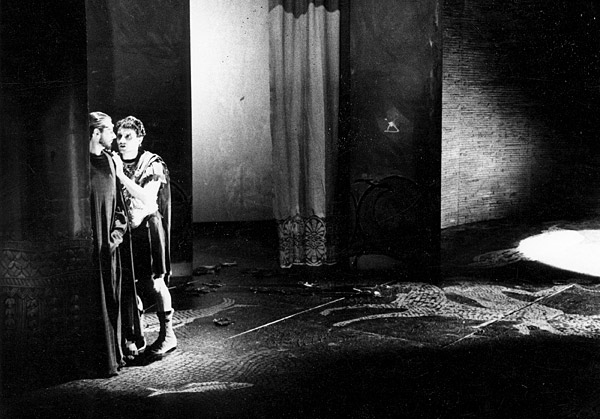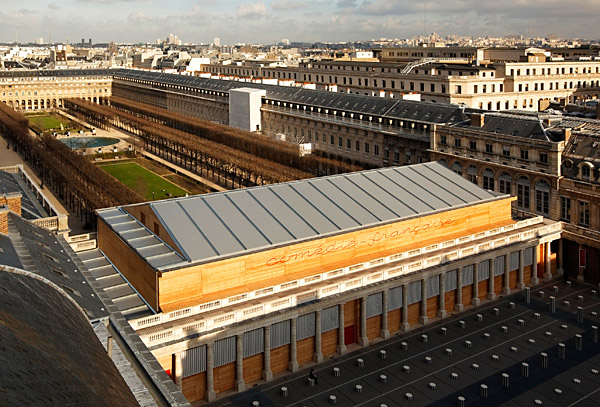Once upon a time
The Comédie-Française is an institution of rare longevity. Founded more than three centuries ago, the only time it came close to disappearing was during a short period of the revolutionary troubles. It therefore has the particular quality of sustaining, over a long time, an activity that is essentially ephemeral. Marked by the seal of powerfrom its beginnings, the chronology of its own history often intersects with that of national history.
1670
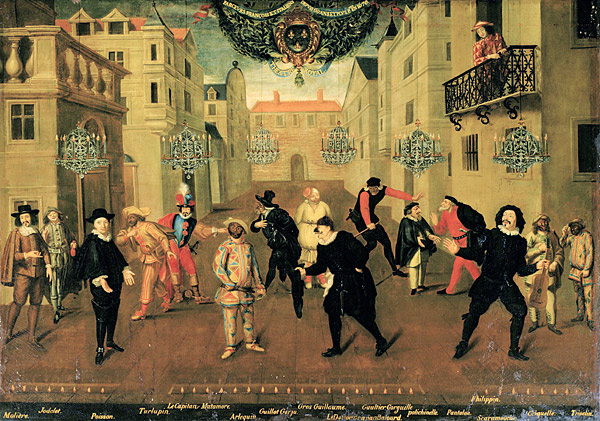
In Paris, three rival theatre groups co-exist: the Marais troupe, the Hôtel de Bourgogne troupe, and the Palais-Royal troupe led by Molière.
1673
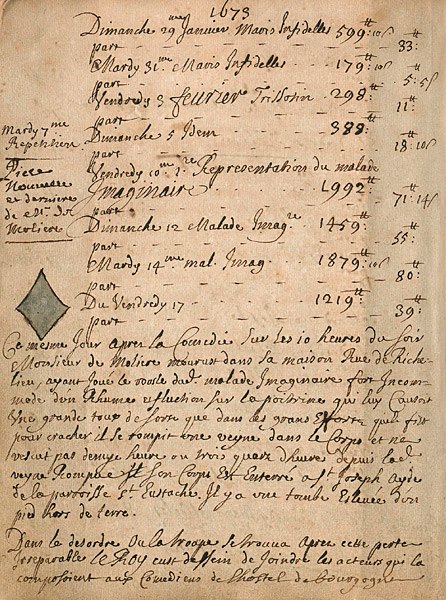
After Molière’s death, upon royal decree, the Marais actors and Molière’s actors combine to form a new troupe that takes up residence at the Hôtel Guénégaud on the Rue Mazarine.
1680
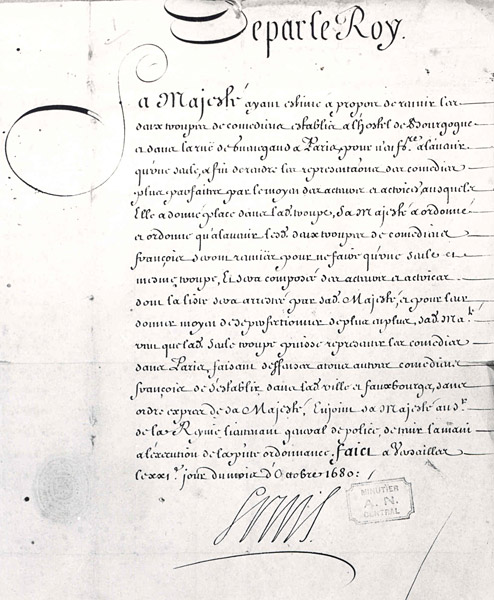
The death of La Thorillière, leader of the Hôtel de Bourgogne troupe, the last rival in Paris to Molière’s troupe, brings about a final merger.
On 18 August, an order from the King, dispatched from Charleville, instructs the last two troupes of French actors in Paris to operate henceforth as a single company.
On 25 August, the actors of the Hôtel de Bourgogne and those of the Hôtel Guénégaud – those formerly of Molière’s troupe, led by La Grange – give their first joint performance.
On 21 October, a decree signed in Versailles, consecrates the creation of a single troupe composed of twenty-seven actors and actresses chosen by the King for their excellence, with the aim of “making the performance of comedies more perfect.” This single troupe, the Comédiens-Français, enjoys a monopoly over performances in French, in Paris and its outlying areas. Its repertoire includes Corneille, Molière and Racine, but also Rotrou and Scarron.
1681
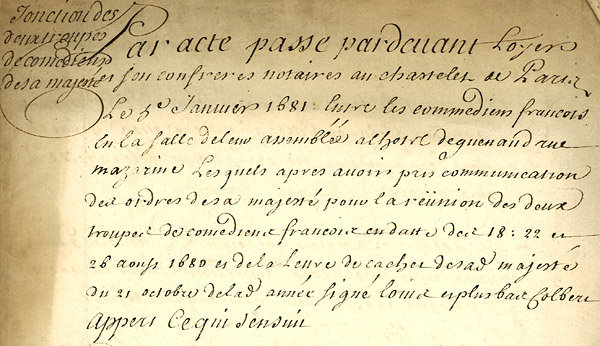
On 5 January, in keeping with the ancient traditions of theatre companies, the Comédiens-Français bind themselves together through an act of association that thereafter will never be called into question. The newly composed troupe includes famous actors such as Armande Béjart, Catherine De Brie, La Grange, Hubert, Du Croisy, Baron, Jeanne Beauval, Mademoiselle Champmeslé, Racine’s favourite actress, and Poisson, the creator of the character Crispin. Like those that came before them, the actors live by sharing the takings of their shows.
1682
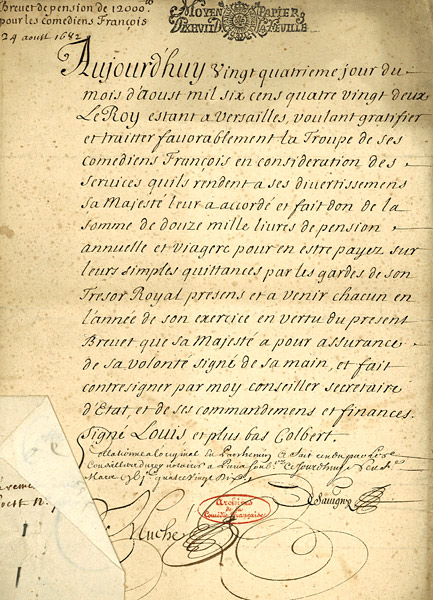
On 24 August, the troupe is awarded a royal pension of 12,000 livres. It therefore enjoys the benefits of royal protection, but in return is more strictly subjected to royal whims and the interferences of royal emissaries. The troupe’s motto Simul et singulis (“be together and be oneself”) and the image of the buzzing beehive are struck on the attendance chip used during its assemblies. The privileged status of the “Comédiens du Roy” (King’s actors) is often challenged by the rival troupes, the Théâtre de la Foire and especially the Comédiens-Italiens. It is in opposition to the latter that the name of Comédie-Française comes to be widely adapted.
1687

The actors are ordered to leave their theatre, the Hôtel Guénégaud, whose proximity to the new Collège des Quatre-Nations (today the Institut de France on Quai de Conti) is a source of alarm to ecclesiastics.
1689
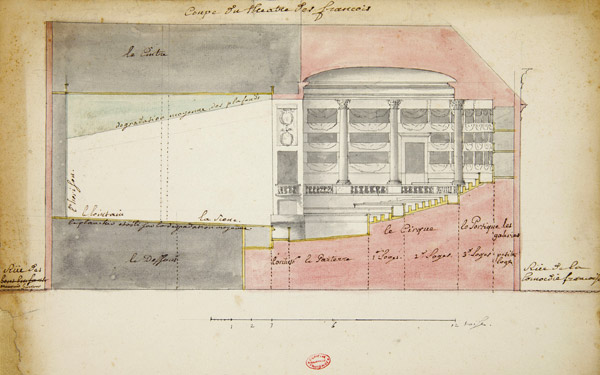
After a period of homelessness, the troupe takes up residence in the Rue des Fossés-Saint-Germain (no. 14 of the present Rue de l’Ancienne-Comédie). On 18 April, the theatre built by the architect Francois d’Orbay opens its doors. The repertoire features the actor-authors Champmeslé, Dancourt and Poisson, in the company of Dufresny, Regnard and Crébillon, among others. Despite a number of successes, the troupe struggles during these years of crisis at the end of Louis XIV’s reign.
1716
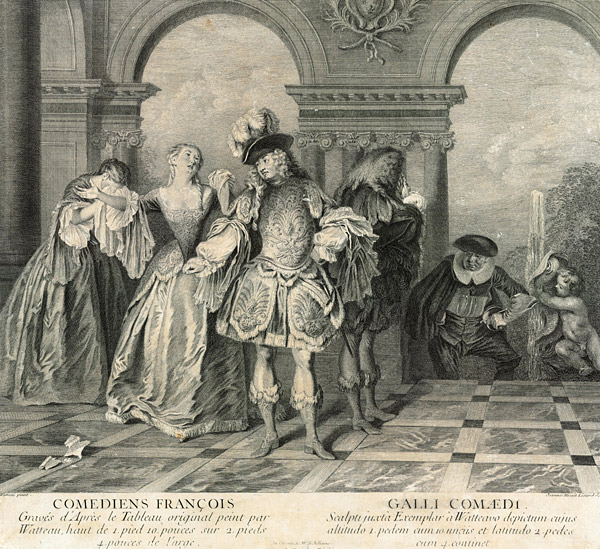
The Regency period, marked by a return to luxury and pleasure, forces the Comédiens-Français to invoke their monopoly to keep up with the reformed Comédiens-Italiens and the prosperous Théâtre de la Foire. The renewed company makes additions to its repertoire: the first tragedies of Voltaire, the works of Destouches, Gresset, Piron, Fagan and Nivelle de La Chaussee, creator of a new dramatic genre, the “tearful comedy”. To compete with the Comédiens-Italiens, some of Marivaux’s comedies are admitted into the Repertoire. The actors of the time are named Mademoiselle Duclos, Mademoiselle Dangeville, Adrienne Lecouvreur; followed, in the middle of the century, by Mesdemoiselles Clairon, Gaussin, Vestris, and the actors Le Kain, Préville and Molé.
1756-1759
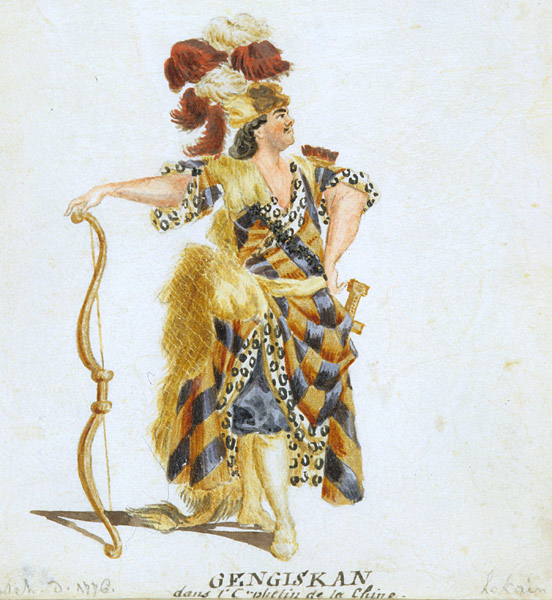
Placed under the authority of the Premiers gentilshommes de la Chambre, Louis XV’s emissaries tasked with applying the new regulations introduced in 1757 and 1766 after the royal court covered their debts, the Comédiens-Français develop their theatre by building small boxes, which bring in a lot of income, and, with the support of Voltaire, rid the stage of the seats reserved for privileged spectators. Stagings, sets, costumes and acting styles evolve under the influence of Le Kain and Mademoiselle Clairon towards more naturalness and realism.
1762-1765
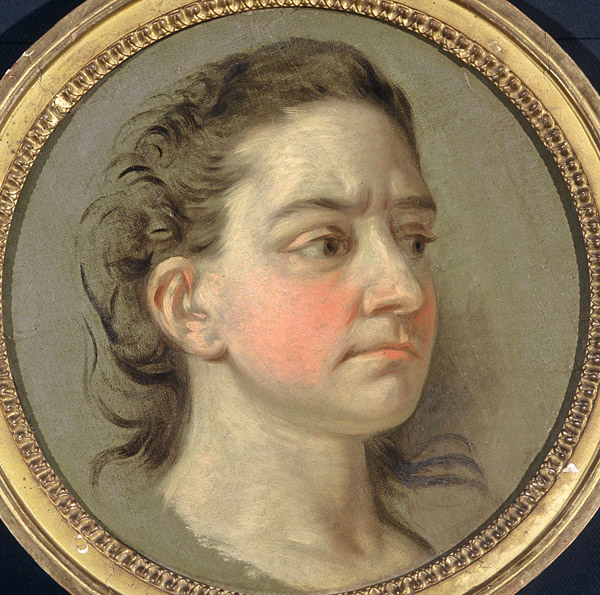
The troupe clashes with the Church during the Crébillon affair – a funeral service in memory of the tragic poet commissioned by the “excommunicated” actors, drawing the wrath of the Archbishop of Paris. The royal authorities also intervene in the Dubois affair, which ends with the incarceration of the Comédiens – those who refused to perform with their dishonest but highly protected comrade – and the withdrawal of Mademoiselle Clairon.
1770
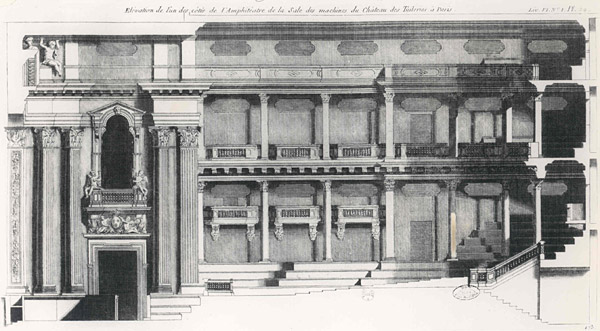
The actors leave their old theatre and install themselves temporarily in the “Salle des Machines” of the Tuileries Palace. Larive, Dazincourt, Fleury and Mademoiselle Contat enjoy their first public successes.
1775
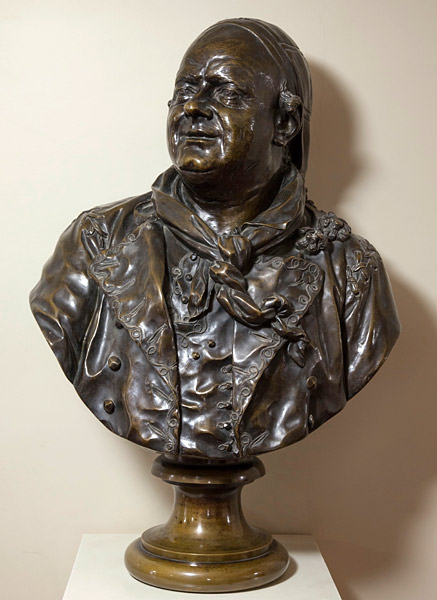
Premiere of Beaumarchais’ Barber of Seville with Préville in the role of Figaro.
1778
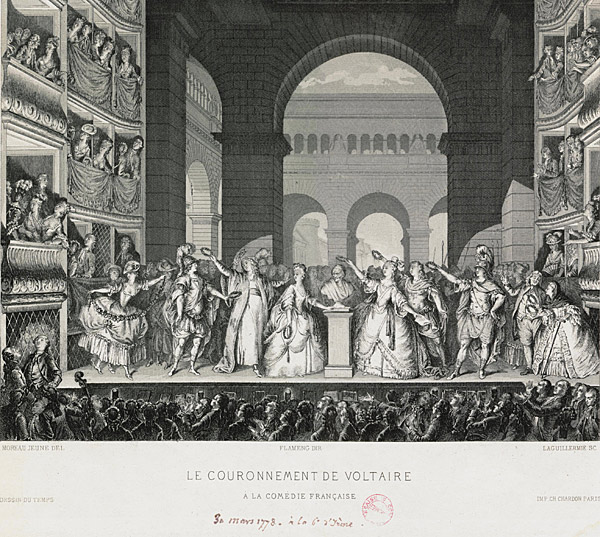
Apotheosis of Voltaire: his bust is crowned on the stage in the presence of the author.
1782
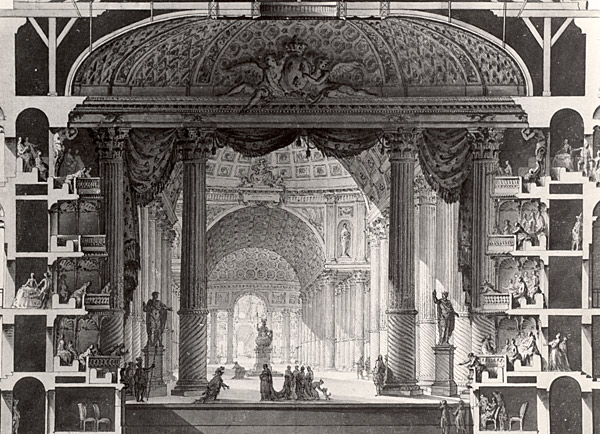
La troupe inaugurates its new theatre on the Faubourg-Saint-Germain (the present-day Odéon), built for it by the architects Peyre and de Wailly. Seating is introduced in the stalls.
1784
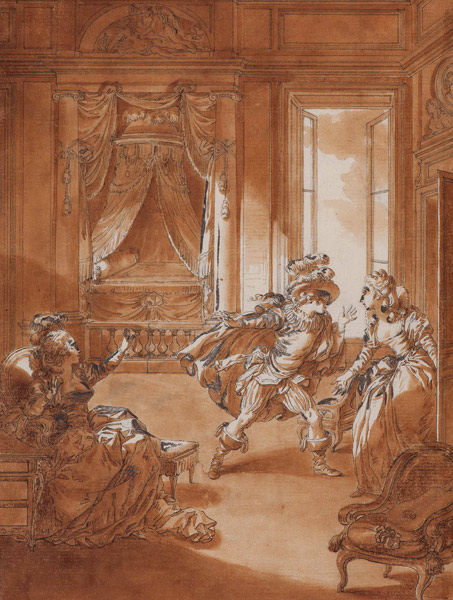
Triumphant and tempestuous premiere of Beaumarchais’ Marriage of Figaro, a comedy heralding the revolutionary spirit.
1789
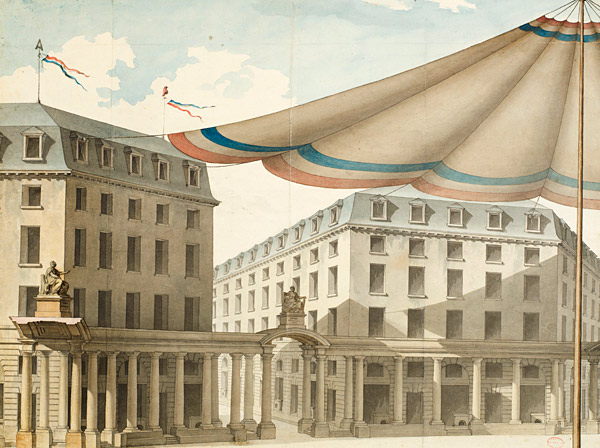
In the wake of the political events, the Comédie-Française takes on the name of Théâtre de la Nation. The Revolution grants actors civil rights that had been denied to them despite Louis XIII’s decree in 1641, but it also puts an end to the Comédie-Française’s special status. The royal pension is abolished, and the decrees of 1790 and 1791 end its monopoly over the French repertoire. During this period, the Comédie-Française is exposed to all kinds of dangers, including the dissidence of a group of “republican” actors who split from the troupe: led by Talma, they take up residence in a theatre known as the Théâtre de la République, recently built by Victor Louis on the Rue de Richelieu.
1793
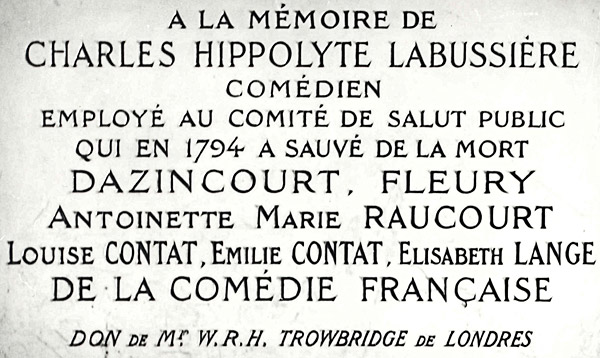
On 3 September, the patriotism of the “monarchist” actors having been questioned by their repertoire choices, the Committee of Public Safety ordered the closing of their theatre at the Odéon, their arrest and the seizure of their records. The devotion of an obscure actor, Charles Labussière, an employee of the Committee of Public Safety, saves them from the guillotine. They regain their liberty with fall of Robespierre, but ruined and without a theatre, the Comédiens disperse to join short-lived troupes in Paris and the provinces.
1799
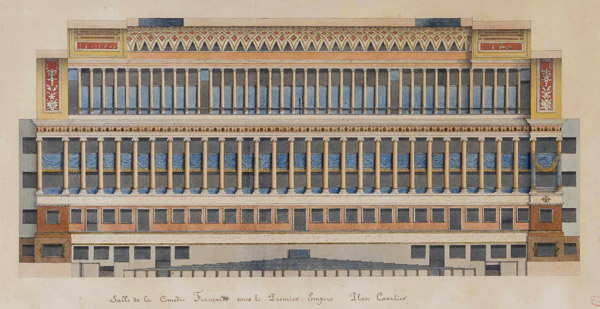
The political storm having abated, the troupe is reunited at the instigation of the writer François de Neufchâteau, who has become Minister of the Interior and then a member of the Directory.
The Government grants the Théâtre Français de la République on Rue de Richelieu to the Société des Comédiens-Français. On 30 May, the new Comédie-Française opens its doors, on 11 Prairial Year VI. Napoleon becomes the protector of the Comédie-Francaise.
1804
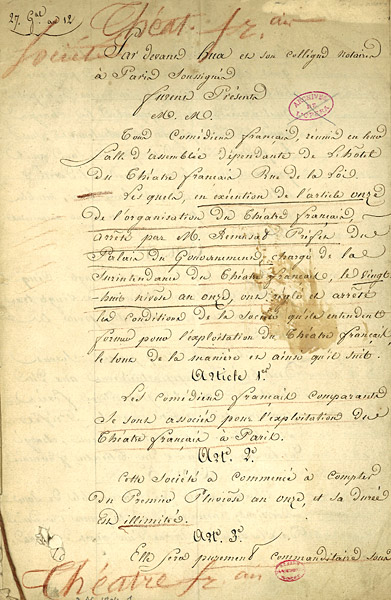
On 17 April, the Comédiens-Français sign a new founding act as a society.
1812
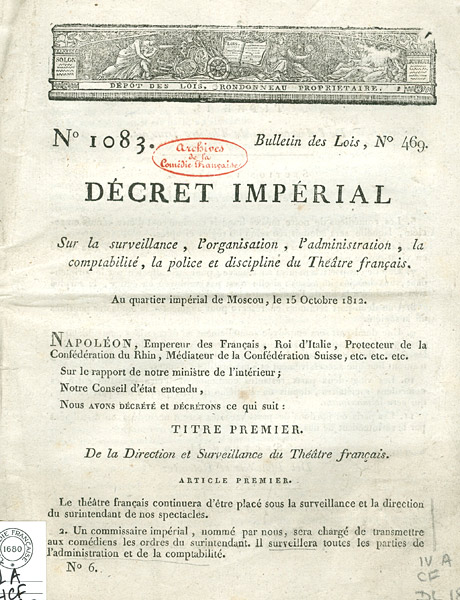
On 15 October, the Moscow decree, signed by Napoleon, ratifies and completes the established regulations. Dominated by Talma, the new members, including Mademoiselle George and Mademoiselle Duchesnois, vie for the audience’s favours in tried and trusted classical plays that outshine the mediocre contemporary repertoire.
1826
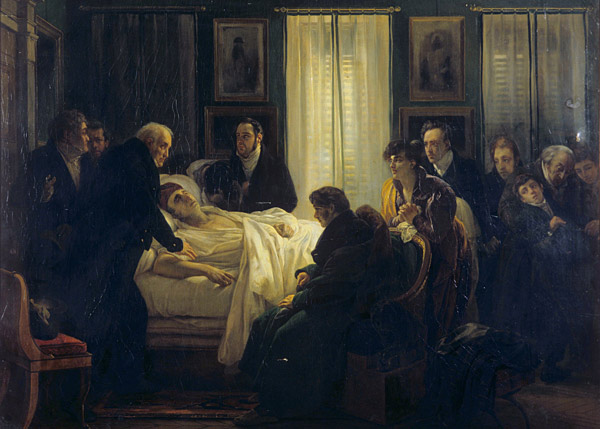
The death of Talma deprives the troupe of its main star. In crisis, the Repertoire is willing to admit the authors of the new romantic school.
1830
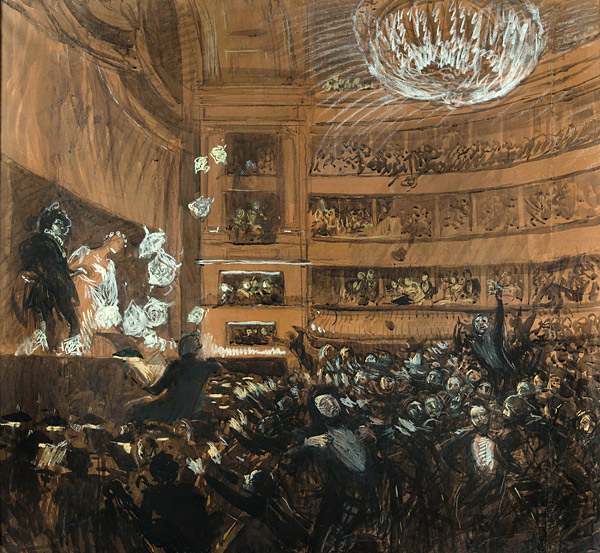
Under the stewardship of government commissioner Baron Taylor, Alexandre Dumas, Alfred de Vigny and Victor Hugo impose a new genre on the Repertoire, the romantic drama, culminating with the battle of Hernani on 25 February 1830, in a period of modernisation for acting, staging and set design.
1843
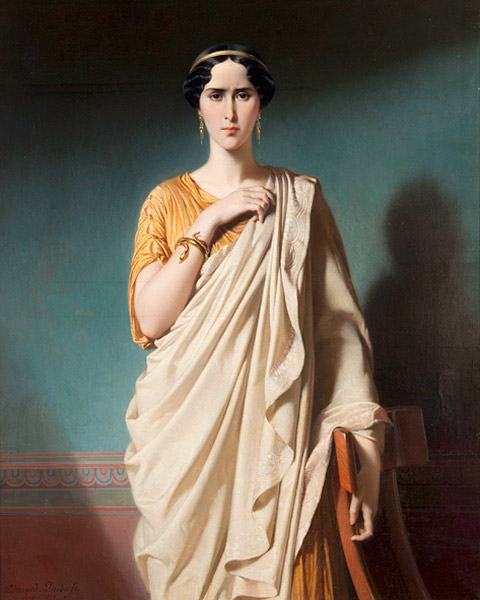
Victor Hugo’s Burgraves is a failure. Classical tragedy comes back into fashion, masterfully served by an exceptional tragedienne, Rachel, a genuine star in a renewed troupe.
1847
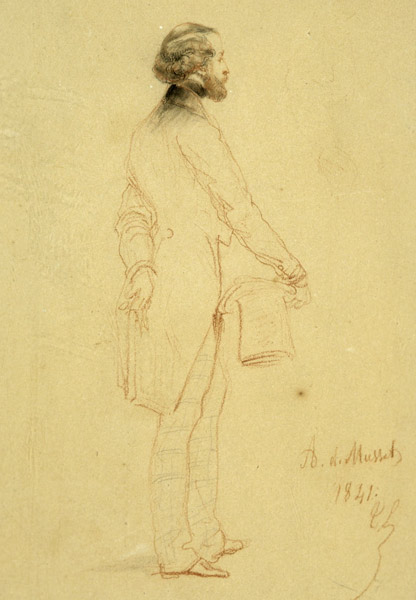
Musset enters the Repertoire with A caprice.
1849
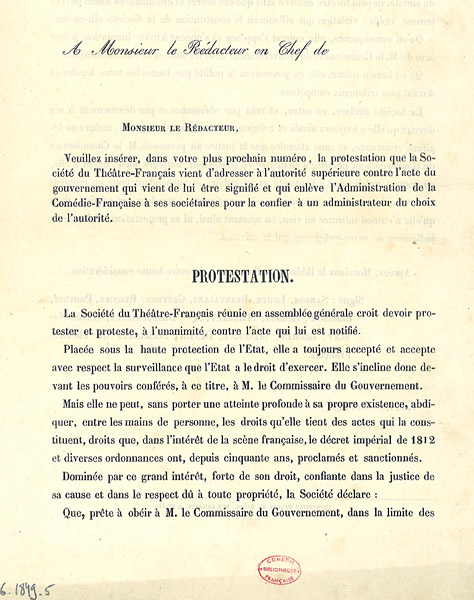
The prince-president Louis Napoleon ends a long period of administrative and financial uncertainty by creating the function of administrator, who reports directly to the Ministry of the Interior.
1850
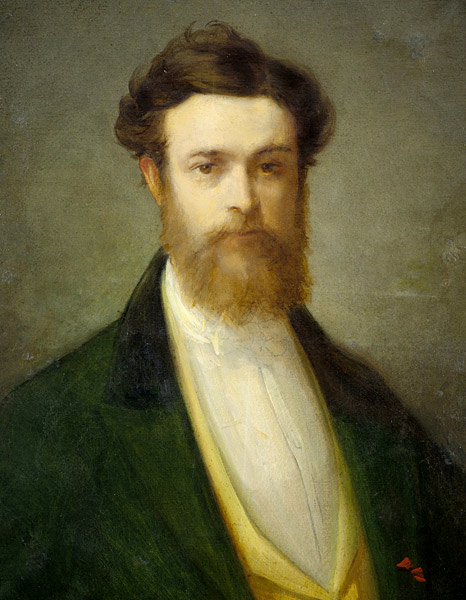
The two first administrators appointed, successively Arsène Houssaye (1850-1856) and Baron Empis (1856-1859), make the Comédie-Française the emperor’s official troupe.
1859-1871
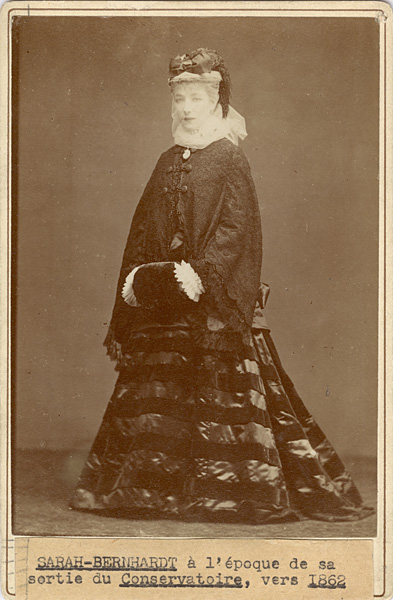
Under the administration of Édouard Thierry, a solid troupe, featuring the young Sarah Bernhardt for a few months, brings about the triumph of the bourgeois comedy and consecrates authors such as Banville, Ponsard and Émile Augier.
1870
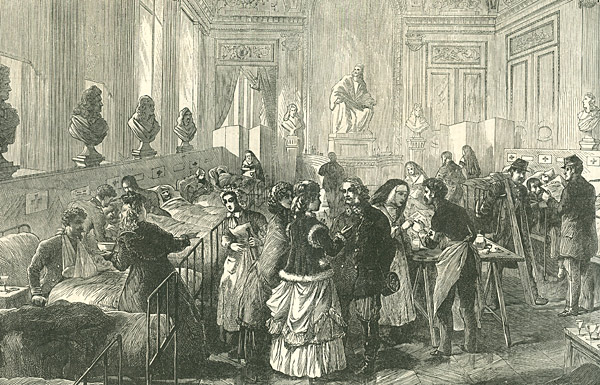
During the siege of Paris, the foyer is converted into a shelter for the wounded.
1871
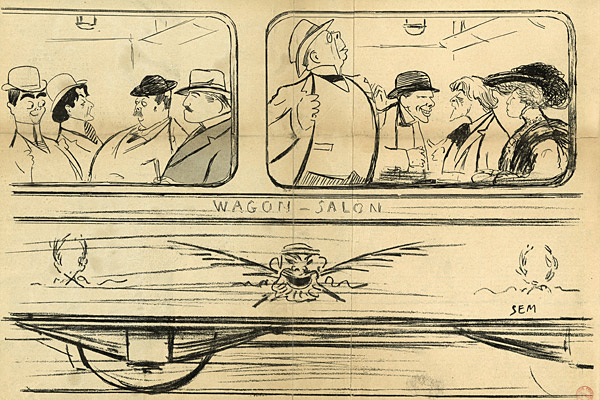
Edmond Got organises a first tour to London, which serves to replenish the theatre’s finances.
1871-1885
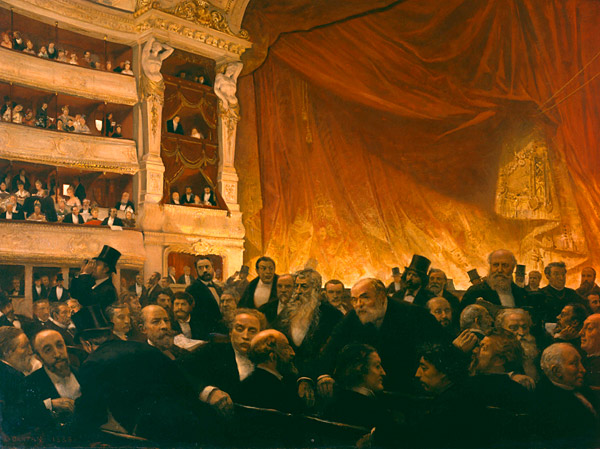
The new administrator, Émile Perrin, former director of the Opera, attracts the cream of Paris to the Comédie-Française. An elite troupe is formed, with Sarah Bernhardt –re-hired– Jeanne Samary, Mounet-Sully, the Coquelins and so on, performing Hugo, Dumas fils, Pailleron, Bornier, Coppée and Erckmann-Chatrian in sumptuous stagings directed by the administrator who inaugurates the system of subscriptions.
Henry Becque’s Les Corbeaux (The Crows) introduces naturalism to the Repertoire.
Mounet-Sully triumphs in Oedipus King, then in Hamlet, Perrin’s last staging before his death.
1885-1913
The twenty-eight years of the Claretie administration are characterised by financial difficulties, a tragic troupe that is more brilliant than the comic troupe, and a contemporary repertoire dominated by the comedy of manners (Hervieu, Brieux, Lavedan, Donnay, Porto-Riche, Bataille, Mirbeau, de Flers and Caillavet).
1891
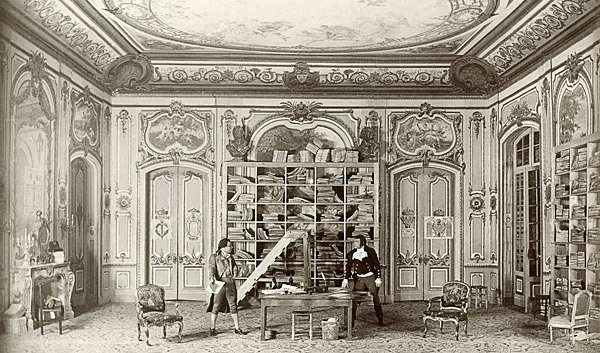
The controversy surrounding the production of Victorien Sardou’s Thermidor, at the height of the Boulangist crisis, puts the Comédie-Française at the centre of Third Republic political debates. The Repertoire is diversified with the inclusion of Rostand, Jules Renard and Courteline.
1900
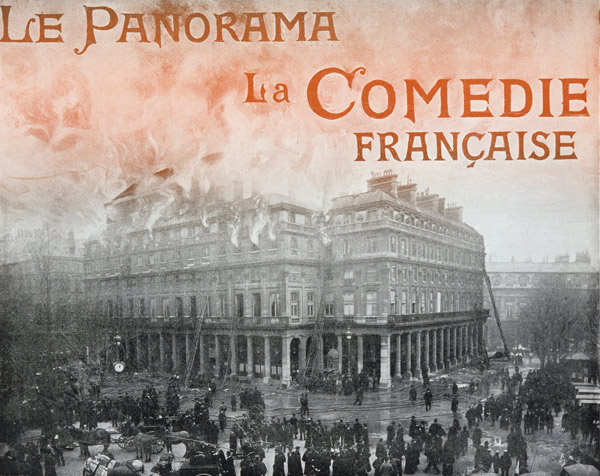
A fire at the theatre leaves the troupe wandering from stage to stage for six months.
1901
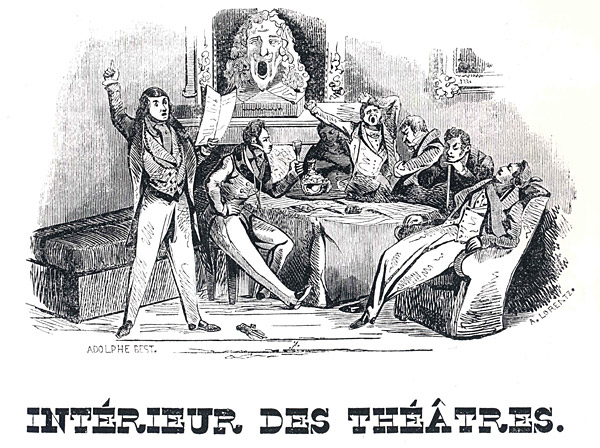
In a show of force against the actors, the Administrator does away with the Reading Committee, leaving Claretie alone in charge of the Repertoire.
The Reading Committee is restored in 1910.
1908
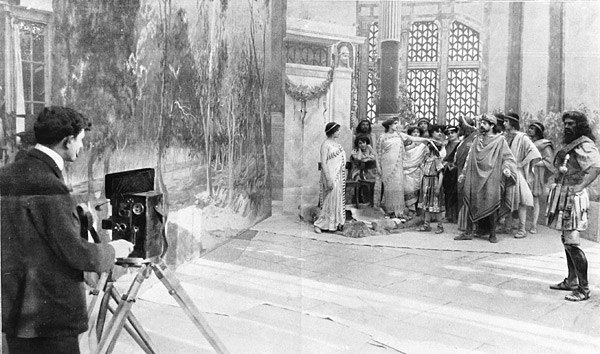
The Comédiens-Français, under the artistic direction of Charles Le Bargy, participate on their first films.
1913-1936
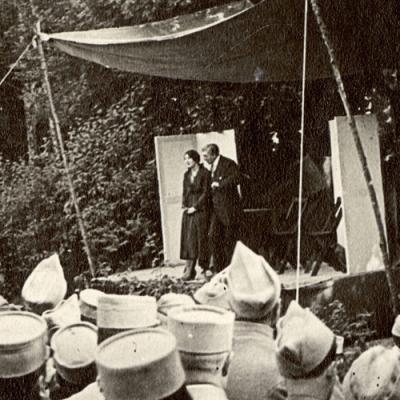
Under the administration of Albert Carré (former artistic director of the Opéra-Comique) and then of the dramatist Émile Fabre, the Comédie-Française goes through a period of transition. During the war, it participates in the performances of the Théâtre aux Armées, organises fund-raising galas and stages patriotic works.
Despite the post-war financial and political crises, Émile Fabre manages to welcome a new generation of dramatists (Jean-Jacques Bernard, Paul Raynal, André Obey) while celebrating the tricentennial of the birth of Molière and the centenary of Romanticism. He introduces foreign authors (d’Annunzio and Ibsen) to the Repertoire, and stages the great repertoire plays: Musset and Balzac.
1933
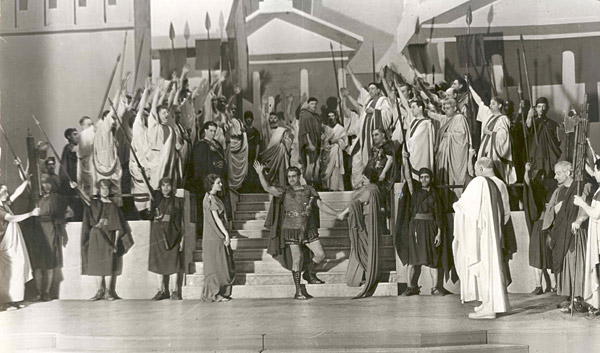
Coriolanus, adapted from Shakespeare and directed by Émile Fabre, sparks incidents in the build-up to the political crisis that peaks on 6 February 1934.
Émile Fabre is dismissed and then reinstated.
1935
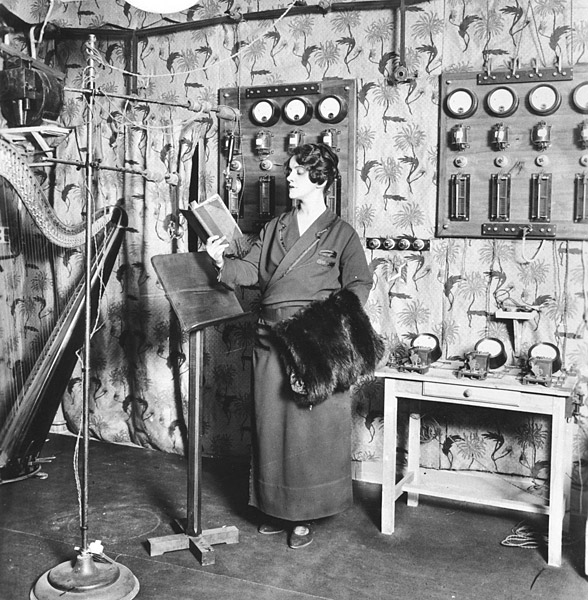
La Comédie-Française takes part in its first radio broadcasts.
1936
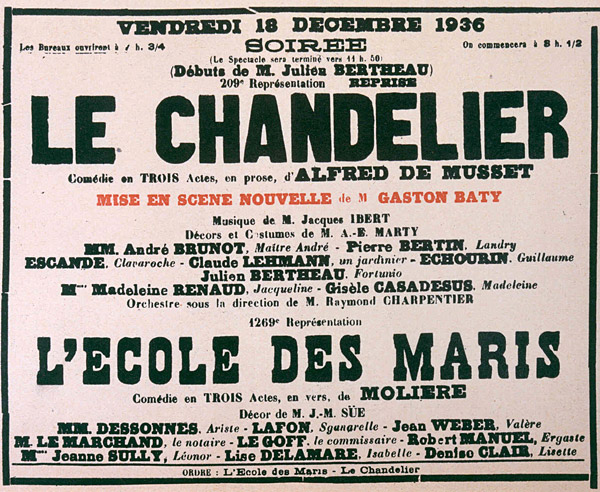
The playwright Édouard Bourdet is appointed as Administrator.
He is assisted by an Advisory Committee composed of directors from the so-called Cartel: Jacques Copeau, Gaston Baty, Charles Dullin and Louis Jouvet. These directors bring a fresh perspective to the classics, while contemporary French and foreign authors –Giraudoux, Lenormand, Mauriac, Romain Rolland and Pirandello– are admitted to the repertoire.
1940-1946
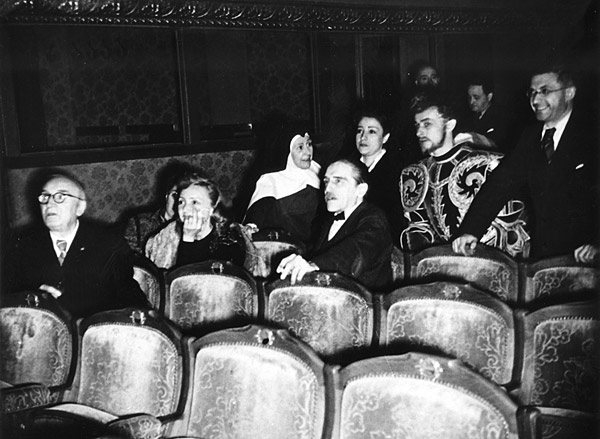
During the war, Jacques Copeau and Jean-Louis Vaudoyer succeed each other as Administrators, followed by Pierre Dux at the Liberation. They endeavour to preserve the integrity and prestige of the Comédie-Française, where, at the height of the German occupation, Montherlant’s La Reine morte (The Dead Queen) and Claudel’sLe Soulier de Satin (The Satin Slipper) triumph.
1946
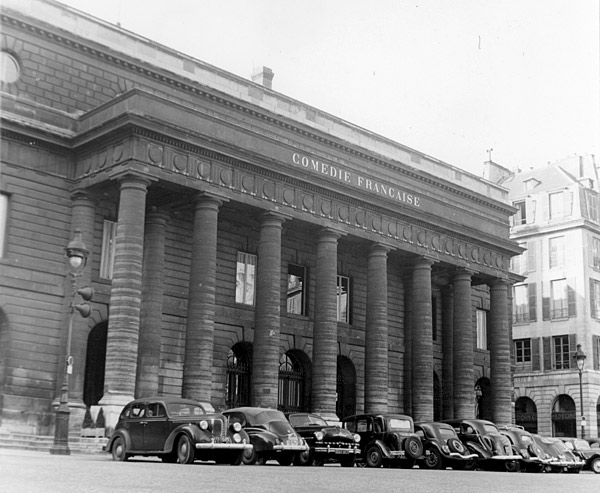
An important Government decree grants the Comédie-Française the use of the Odéon –referred to as the Salle Luxembourg to distinguish it from the Salle Richelieu– triggering the departure of a group of sociétaires.
1946-1960
The Administrators André Obey, Pierre-Aimé Touchard, Pierre Descaves and Claude de Boisanger face various crises and increase the number of actors in the Troupe.
1959
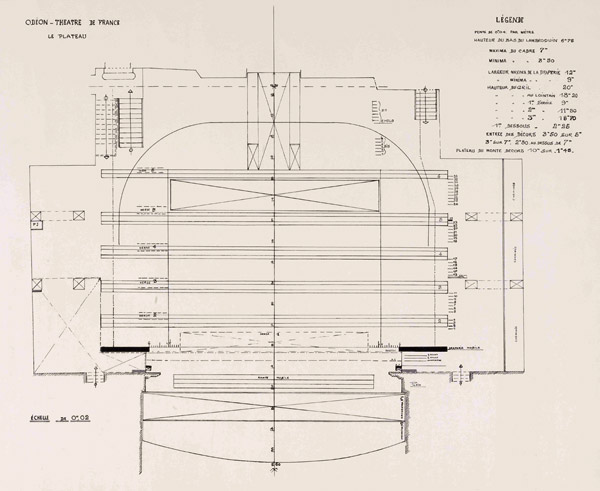
The running of the Odéon is withdrawn from the Comédie-Française.
1960-1970
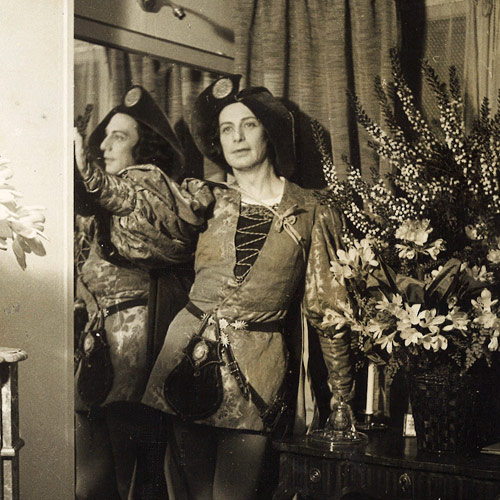
Maurice Escande opens theatre to new actors and outside directors.
1960-1983
Three Actor-Administrators are placed in charge, all from the ranks of the Comédie-Française Troupe.
1970-1979
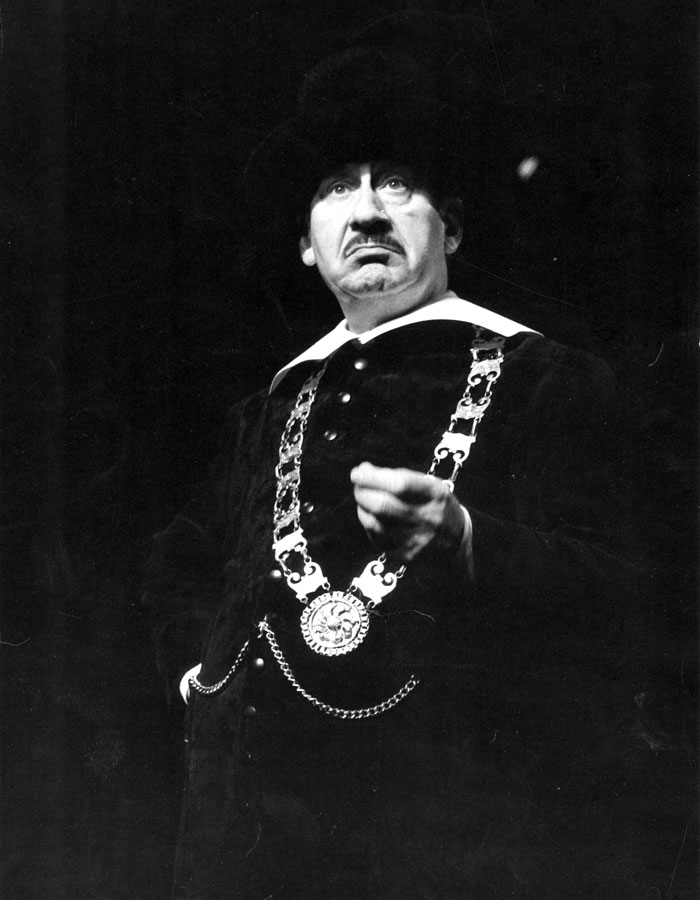
Pierre Dux continues this policy by bringing in foreign directors. He celebrates the tricentenary of the Molière’s death, works on administrative reform and the renovation of the theatre.
The Comédie-Française is placed back in charge of the Odéon in 1971.
1979-1983
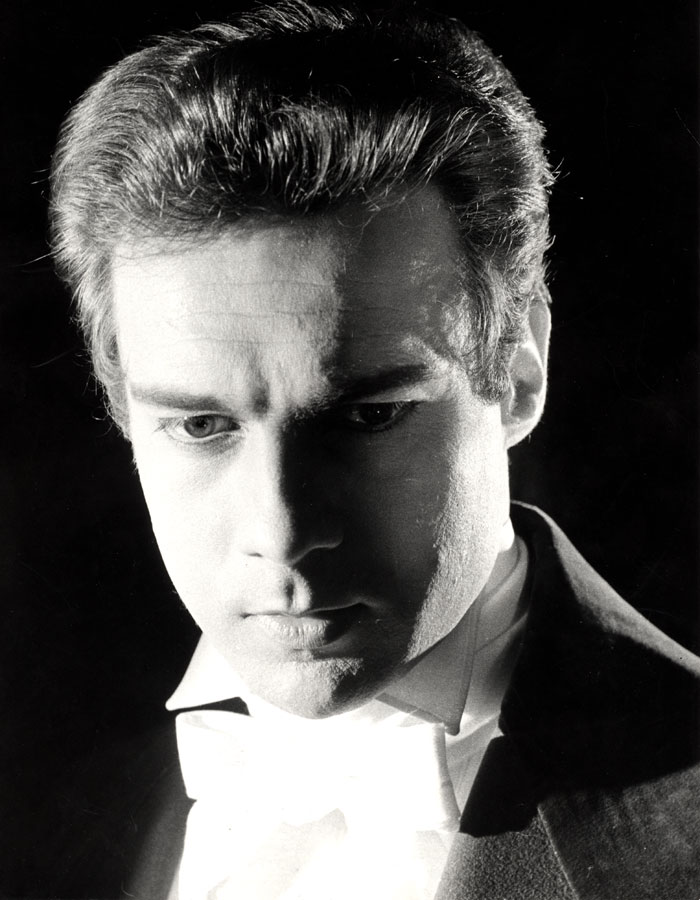
Jacques Toja succeeds Pierre Dux.
1980
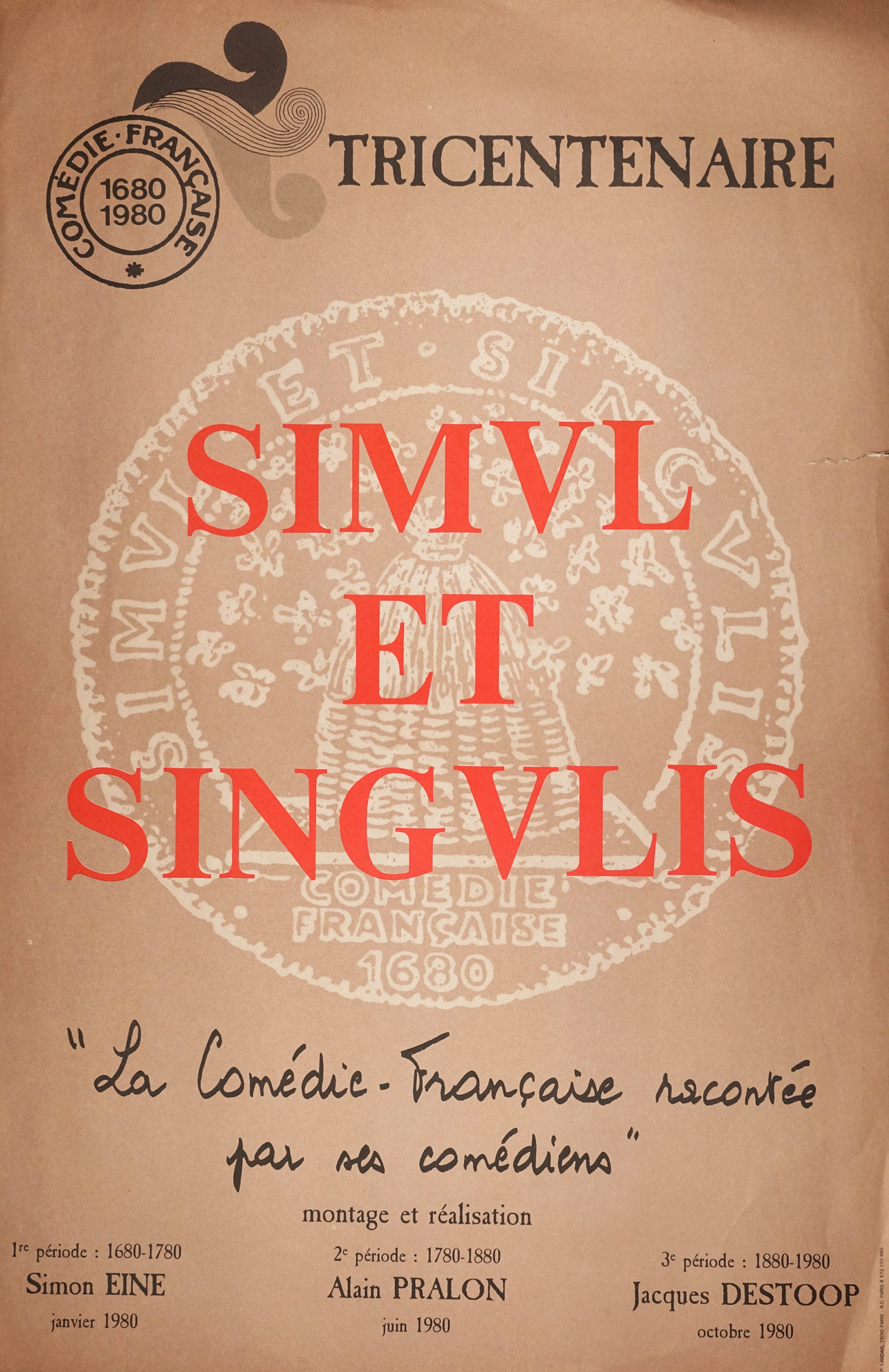
Jacques Toja takes over responsibility for productions and the exhibition for the tricentenary of the Comédie-Française, then celebrates the bicentenary of the Odéon (1982) by inviting many important foreign companies.
1983
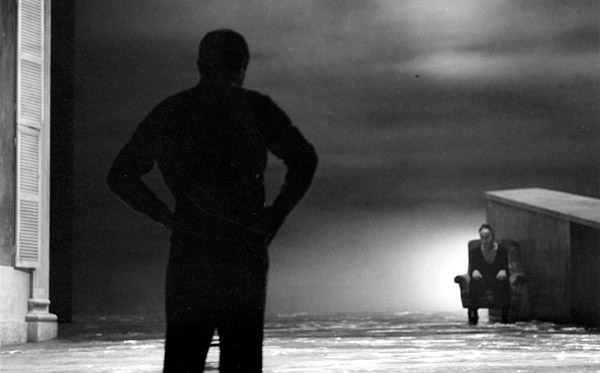
Jean Audureau’s Félicité unsettles spectators and critics.
1983
Appointment of Jean-Pierre Vincent, former director of the Théâtre national de Strasbourg, an actor and director who is a figure of decentralisation.
He intends to direct the theatre “from the boards”. His mandate marks a change in direction with the choice of new authors and the aesthetics of the new productions.
The formal dress rule for Tuesday performances is abolished.
1983
The running of the Odéon is with drawn from the Comédie-Française.
1983-1990
The decade is marked by the mandates of four Administrators.
1984
Jean-Pierre Vincent rules himself out of renewing his mandate as Administrator.
1984
1986
Jorge Lavelli’s landmark production of A Midsummer Night’s Dream.
1986
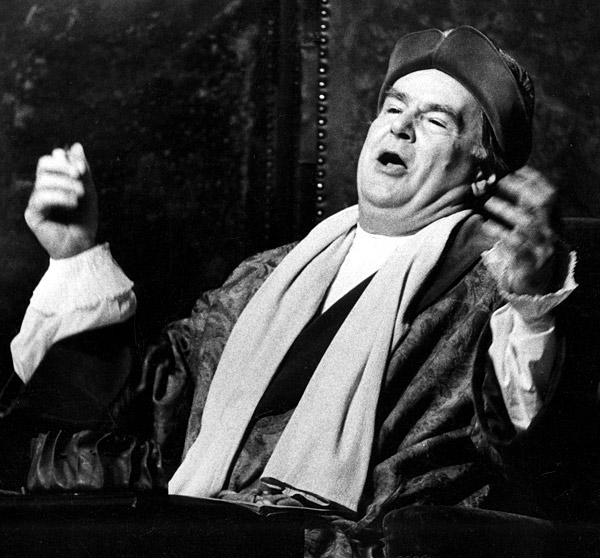
Jean Le Poulain, a sociétaire of the Comédie-Française, is appointed Administrator. He faces opposition from part of the troupe. The classical repertoire dominates over the bold programming of his predecessor.
The Théâtre national de l’Odéon is attached to the Comédie-Française.
1988
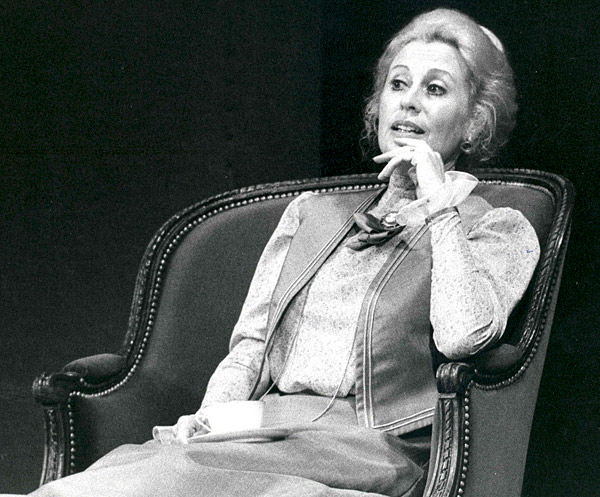
On 1 March, Jean Le Poulain dies before the end of his mandate. The Doyenne, Claude Winter, steps up in acting Administrator.
1988
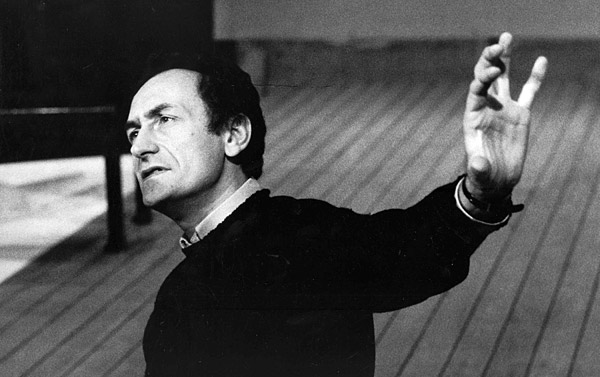
On 15 June, Antoine Vitez, artistic director of the Théâtre national de Chaillot, is appointed to the post of General Administrator. He takes over his predecessor’s programme.
1989
Antoine Vitez adds Beaumarchais’ Marriage of Figaro to the programme to celebrate the bicentennial of the French Revolution.
1989-1990
The 1989/1990 season is marked by noteworthy productions: Jean-Paul Sartre enters the Repertoire, with Huis clos (In Camera) directed by Claude Régy, and Bertolt Brecht’s Life of Galileo is premiered at the Comédie-Française in a staging by Antoine Vitez, which is to be his final production.
The Odéon is once again withdrawn from the Comédie-Francaise.
1990
On 30 April, Antoine Vitez dies suddenly.
1990
On 4 July, Jacques Lassalle, director of the Théâtre national de Strasbourg, is appointed as General Administrator. He stages works by Marivaux, Goldoni and Molière.
1991
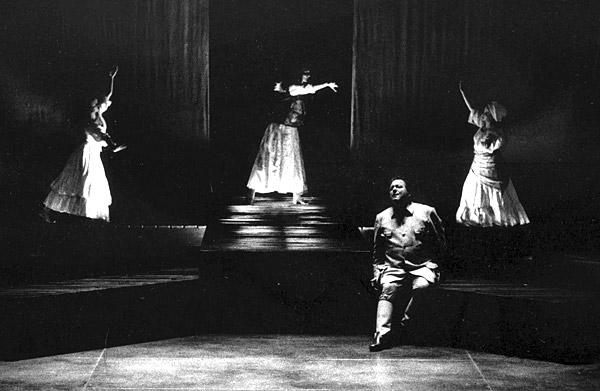
Aimé Césaire enters the Repertoire with La Tragédie du roi Christophe (The Tragedy of King Christophe) directed by Idrissa Ouédraogo.
1993
July. Jacques Lassalle steps down as Administrator after staging Molière’s Dom Juan with the Comédiens-Français at the Avignon Festival.
1993
On 5 August, Jean-Pierre Miquel, a director and recent head of the Conservatoire, is appointed as Administrator.
The classical and modern repertoires are expanded, the programming of the Salle Richelieu and the Théâtre du Vieux-Colombier opens up to foreign and contemporary theatre.
1993
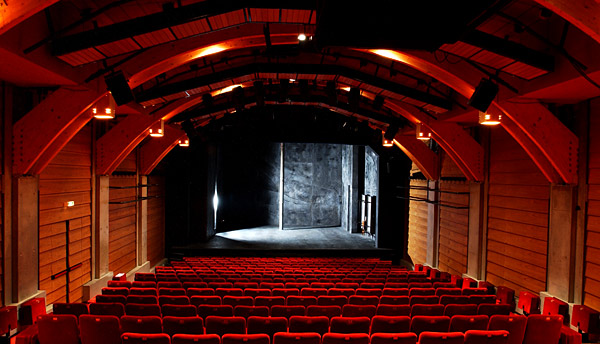
The Théâtre du Vieux-Colombier (300 seats), which has been promised to the Comédie-Française since 1988, is reopened.
1994
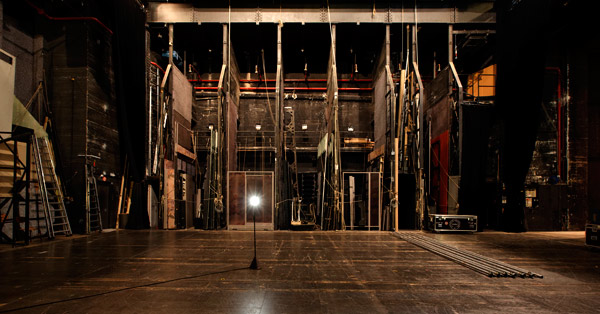
A major refurbishment is undertaken to modernise the fly tower and renovate the theatre. During the work, the Comédie-Française operates from the provinces while maintaining its activity in Paris.
1995
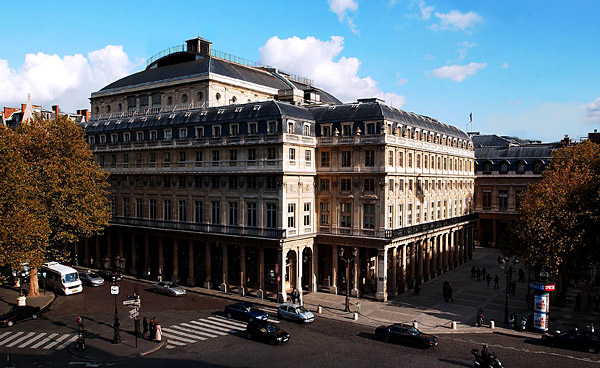
The statutes are modified again.
On 1 April, the Comédie-Française is redefined as a Public Body with Industrial and Commercial Functions (Établissement public à caractère industriel et commercial, EPIC) under the authority of the Minister of Culture. The mandate of Administrator is extended to five years, renewable for periods of three years.
1996
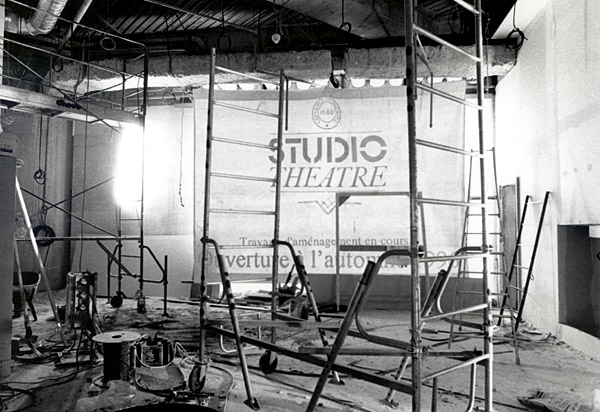
A third stage, the Studio-Théâtre (136 seats), is inaugurated in the autumn in the Carrousel du Louvre.
1998
Jean-Pierre Miquel’s mandate is renewed until 2001.
2001
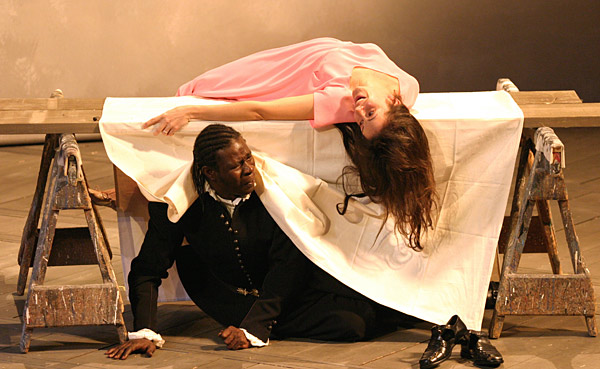
On 4 August, the director Marcel Bozonnet, who was an actor in the Troupe from 1982 to 1992 and subsequently the head of the National Theatre Conservatory, is appointed General Administrator.
He programmes a repertoire encompassing all eras, with the intention of drawing from the past to nourish new productions.
2002
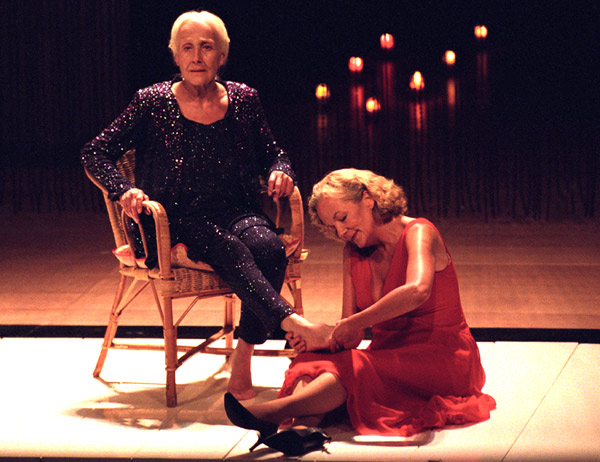
Marguerite Duras enters the Repertoire with Savannah Bay.
2003
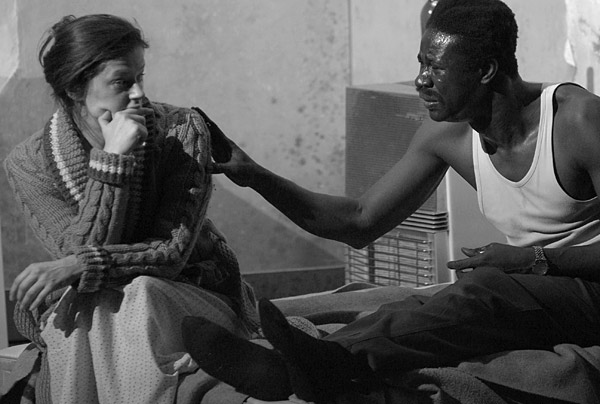
Papa doit manger (Papa Must Eat) by Marie NDiaye.
2004
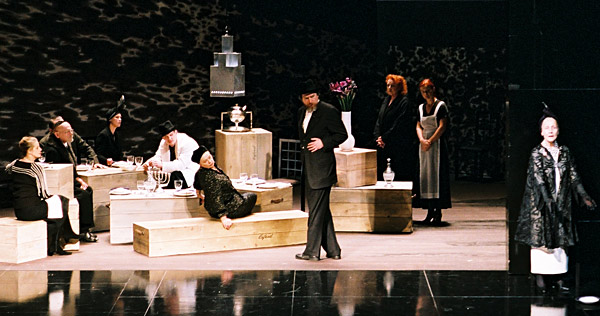
Thomas Bernhard enters the Repertoire with Heroes' Square.
2005
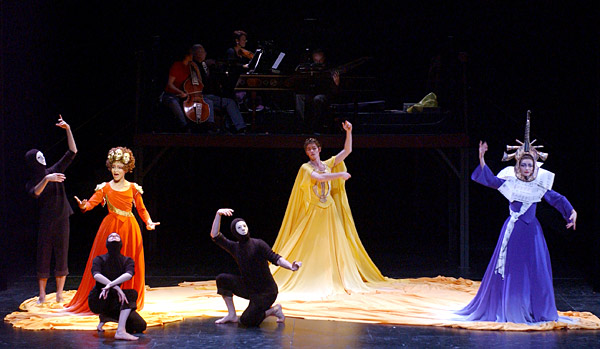
The dialogue between theatre and music is revived. Premiere of Molière’s L'Amour médecin et Le Sicilien ou l'Amour peintre in co-production with Les Arts Florissants.
2006
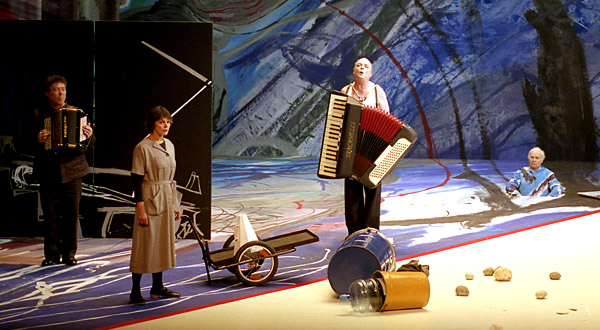
Valère Novarina enters the Repertoire with L'Espace furieux (The Furious Space).
Non-Repertoire plays by Gao Xingjian, Tony Kushner, Lars Norén and Philippe Minyana are also programmed.
The end of Marcel Bozonnet’s mandate is marked by the controversy surrounding the “Peter Handke affair”, the latter having been removed from the programme because of his links with Milosevic.
2006
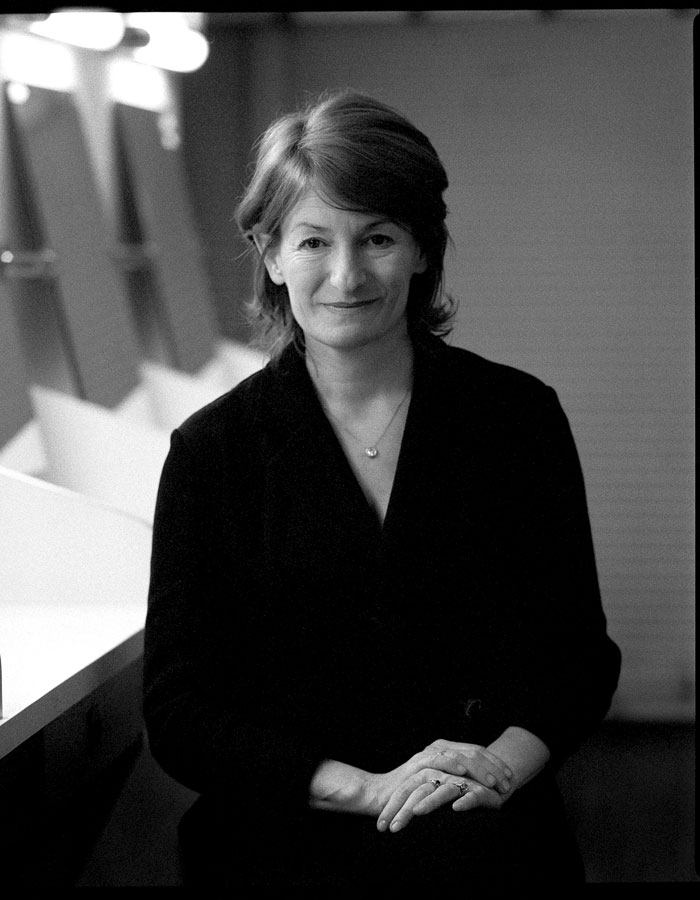
Muriel Mayette-Holtz is the first woman to be appointed Administrator of the Comédie-Française.
An actor from the Troupe as well as a director, she diversifies events around the main programme (cabarets, debates, carte blanche evenings, portraits of actors and professions, readings of the senses, etc.) and opens up the Repertoire to new horizons.
2007
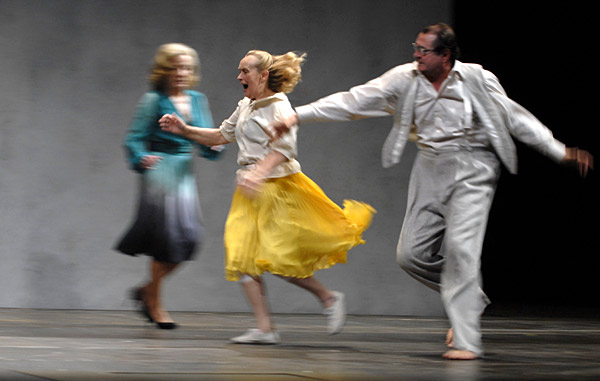
Bernard-Marie Koltès enters the Repertoire with Le retour au désert (Return to the Desert).
2009
To serve the Repertoire, since 2009 the Troupe has counted on the collaboration of six student actors recruited every year from major theatre schools to spend one season at the Comédie-Française.
2009
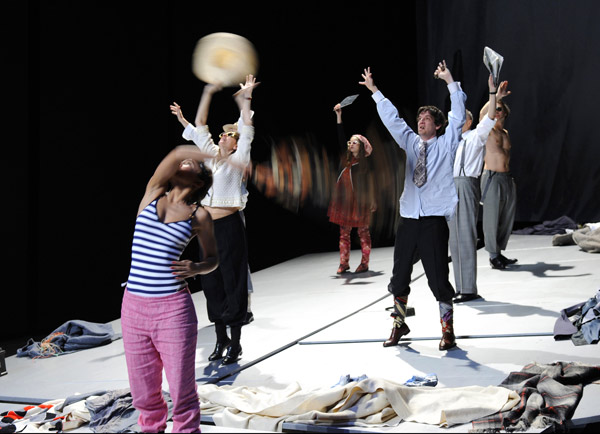
Michel Vinaver enters the Repertoire with L'Ordinaire (The Ordinary).
2010
From 2010, important audiovisual partnerships are developed: television broadcasts of performances, feature film adaptations shot on site, collaborations with directors (Mathieu Amalric, Valérie Donzelli, Arnaud Desplechin and Valeria Bruni-Tedeschi) to shoot original films with the Troupe based on the programmed plays.
2010
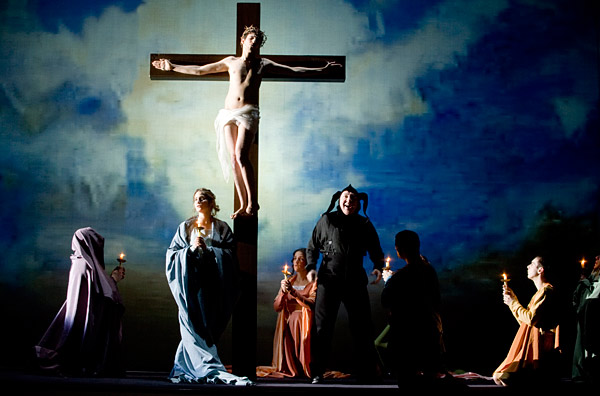
Dario Fo enters the Repertoire with Mystère Bouffe 1 et 2 (Comic Mysteries and Fabulations).
2011
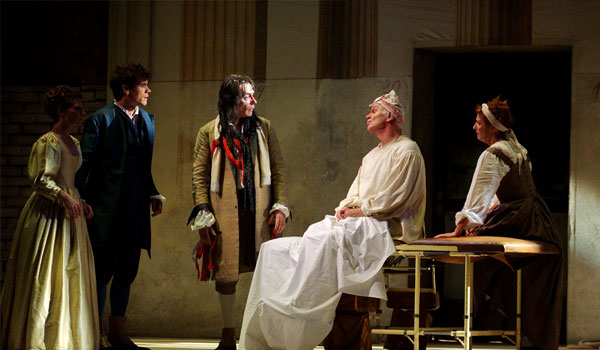
Comédie-Française’s first tour in Asia (China, Korea, Taiwan) with Molière’s Imaginary Invalid (directed by Claude Stratz).
2011
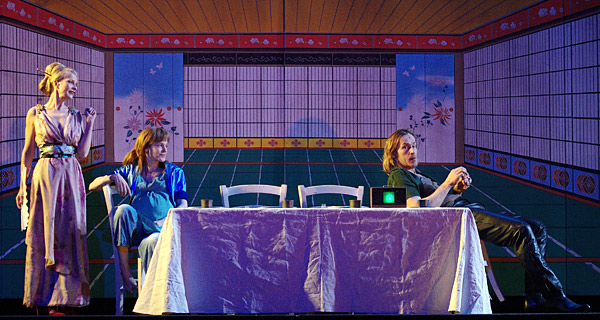
A Streetcar Named Desire by Tennessee Williams: the first American text to enter the Repertoire.
2012
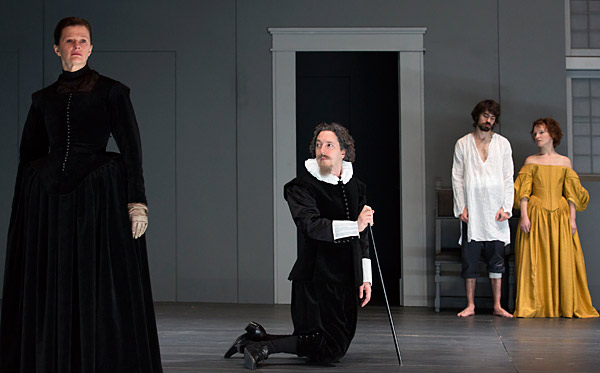
One Flea Spare by Naomi Wallace.
2012-2013
2013
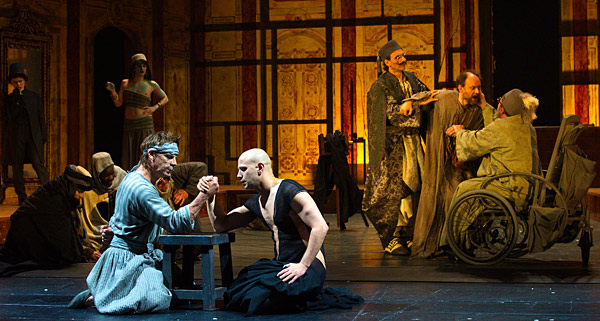
Rituel pour une métamorphose (Ritual for a Metamorphosis) by Saadallah Wannous: first Arabic text to enter the Repertoire.
2014

The sociétaire (actor in the Troupe from 1993 to 2014), set designer and director Éric Ruf is appointed Administrator.
His mission brief includes having the troupe work with major international directors, returning to the Avignon Festival and beginning work on the Cité du Théâtre.
2016

The French President announces the creation of the Cité du Théâtre.
(discontinued in September 2023)
2016
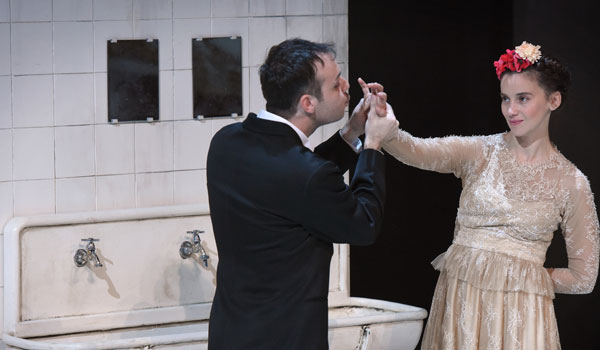
First live broadcastof a play (Romeo and Juliet, directed by Éric Ruf) in cinemas thanks to a partnership with Pathé Live.
2016
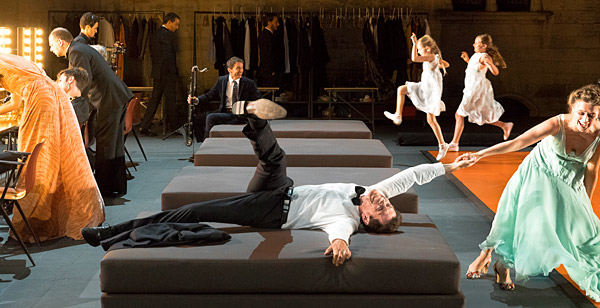
The Comédie-Française returns to Avignon, after a 23-year absence. First performance of Les Damnés (The Damned, after the screenplay by Visconti, Badalucco and Medioli, directed by Ivo van Hove) in the Cour d'Honneur of the Palais des Papes.
2016
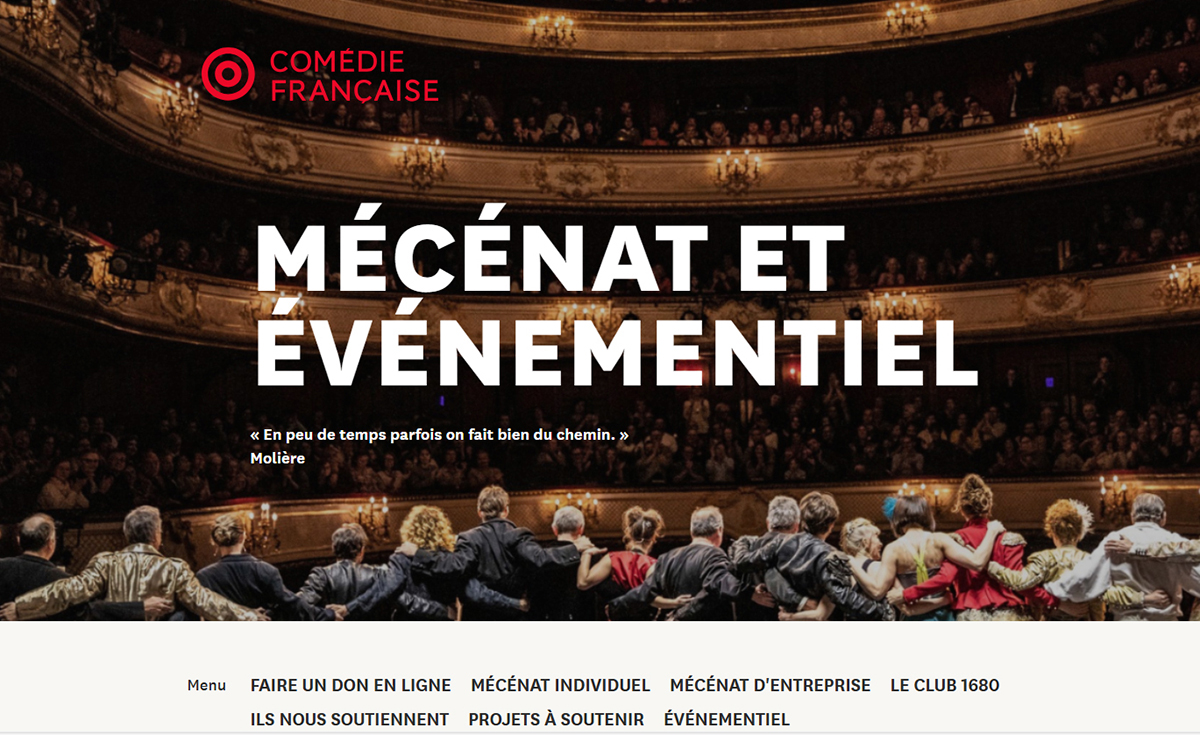
Creation of the Fondation pour la Comédie-Française.
2016-2017
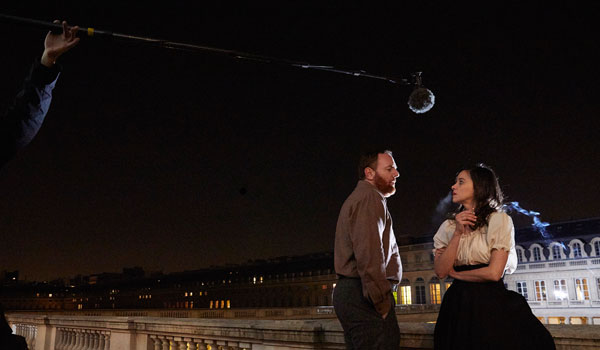
Screenplays enter the Repertoire (Les Damnés based on the screenplay by Luchino Visconti, Nicola Badaluco and Enrico Medioli and La Règle du Jeu after Jean Renoir).
2019
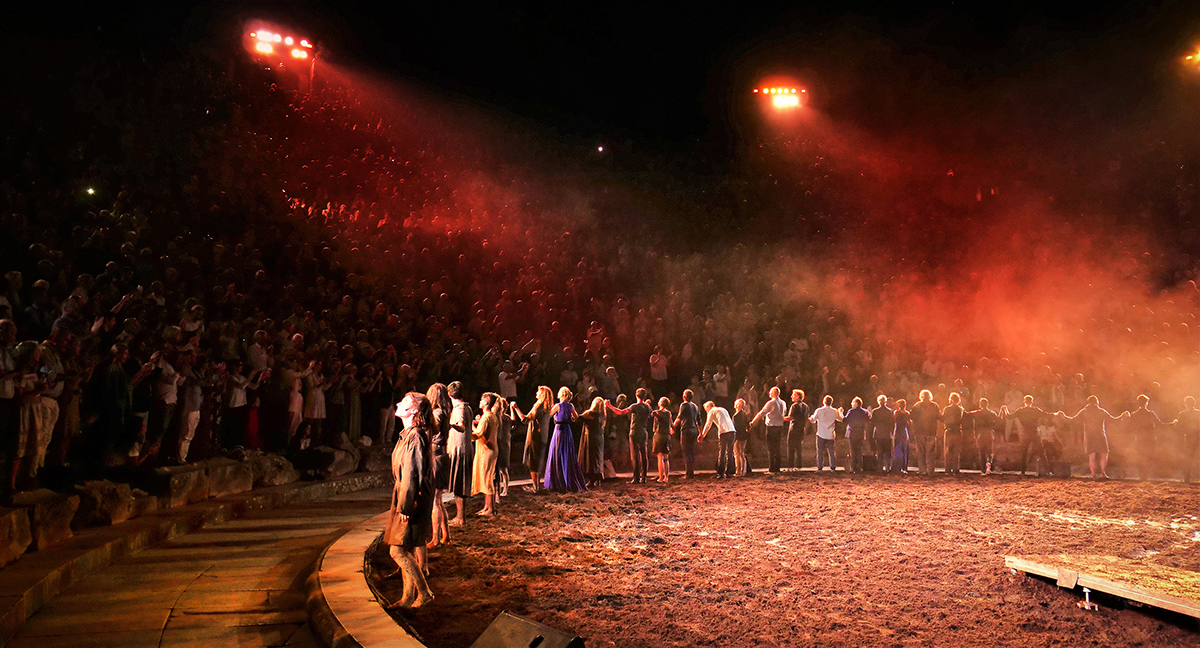
Comédie-Française's first tour of the Ancient Theatre of Epidaurus, on July 26 and 27 of 2019, with Euripides' Electra / Orestes, staged by Ivo van Hove.
2020
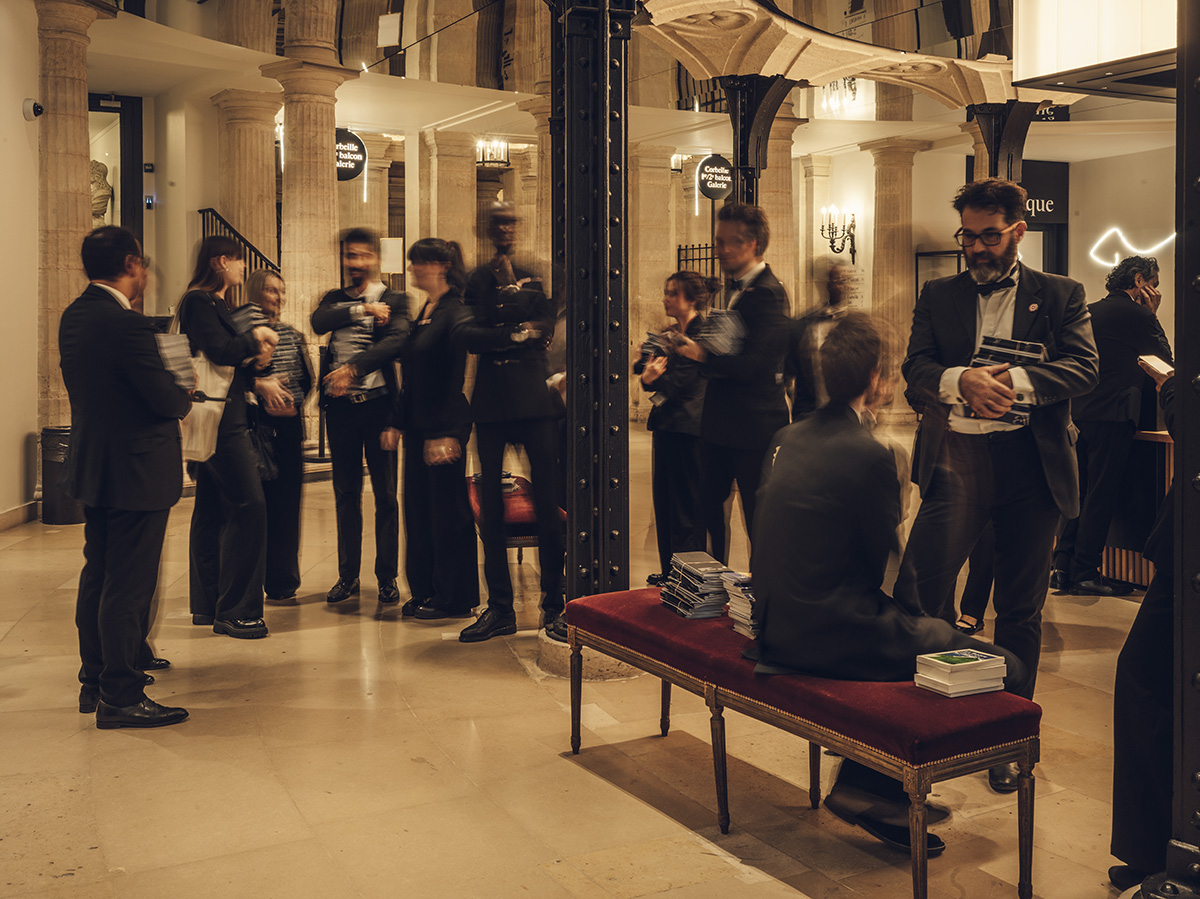
Renovation of the Peristyle and Salle Richelieu (restoration of hangers, accessibility, reorganization of the entrance hall and shop).
2020

Launch of the Comédie-Française's first web channel, La Comédie continue, during the government lockdown against the Covid-19 epidemic. 111 curtain raisers, 661 pastilles broadcast from March to May 2020.
2020-2021
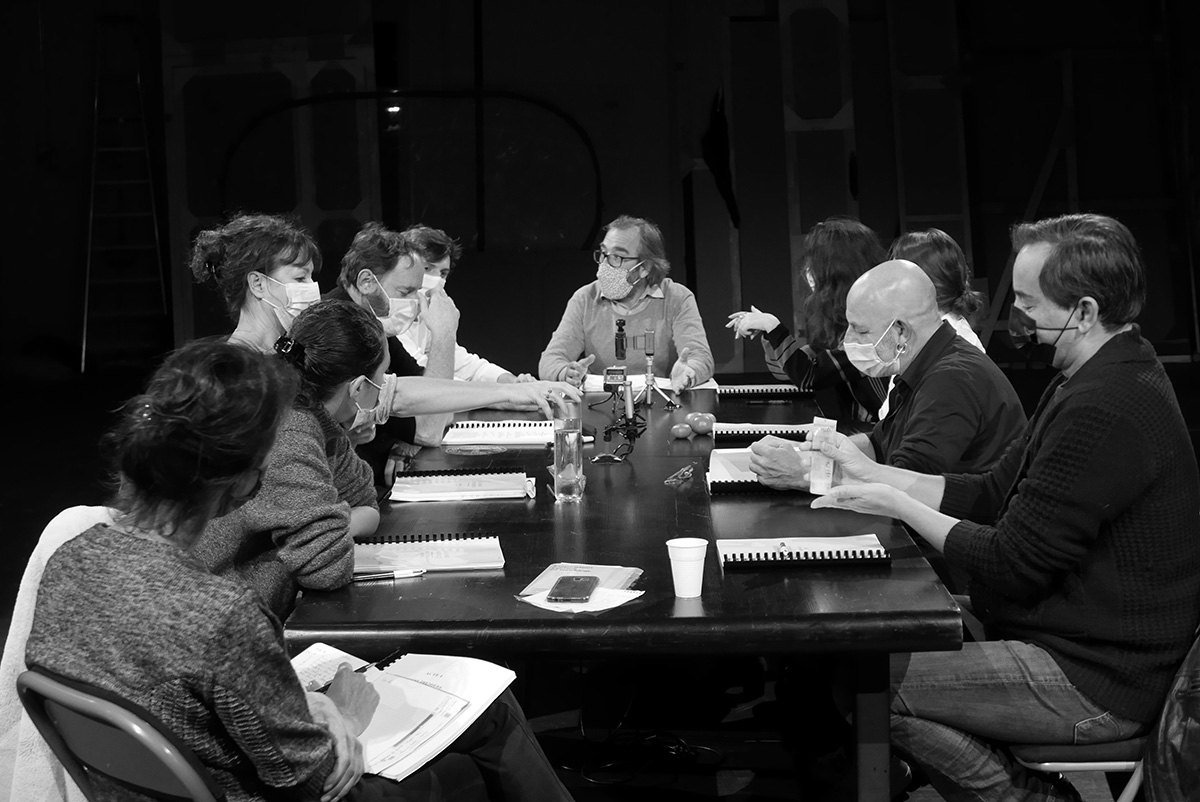
Launch of the online programme Théâtre à la table with the Company, a unique system in which a team prepares the creation of a play in just a few days before it is broadcast live.
2021-2022

Launch of the Quelle Comédie! program on news from the Institution and the Company.
(It will become a podcast from September 2024)
2022
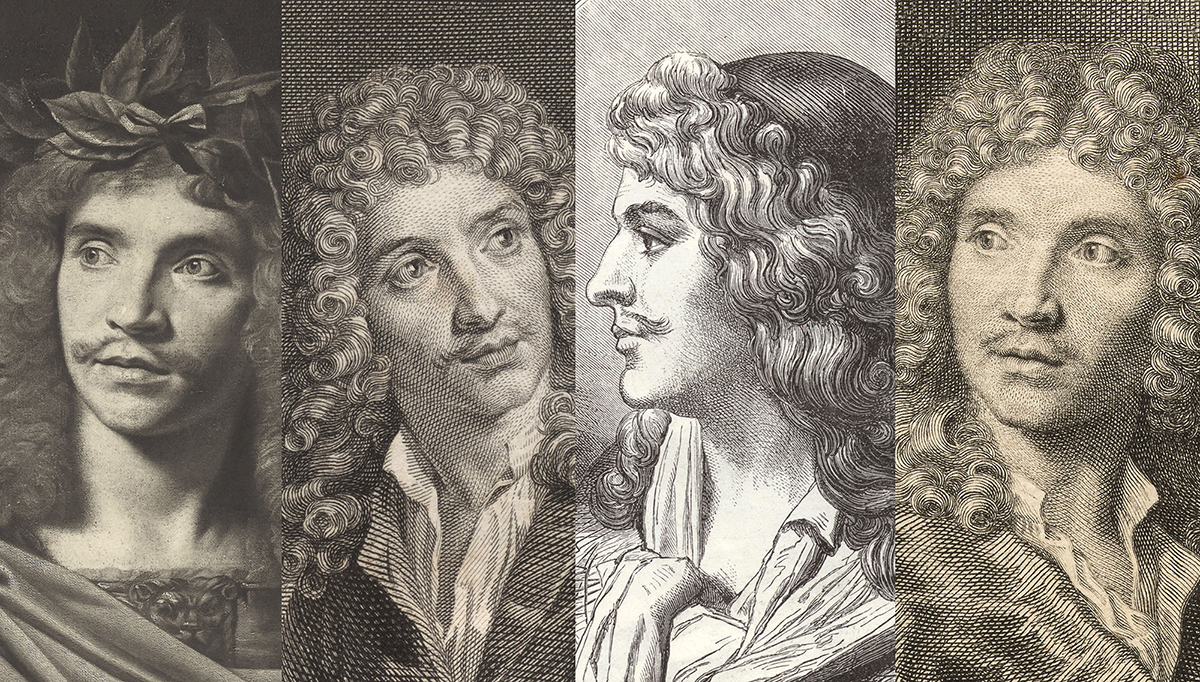
The Molière year (400th anniversary of his baptism) attracted 220,226 spectators in the three theatres and almost 100,000 views for the online programs. 5 exhibitions were organised, including Molière à l'honneur in the Great Staircase and Molière. Le jeu du vrai et du faux at the BnF.
2023
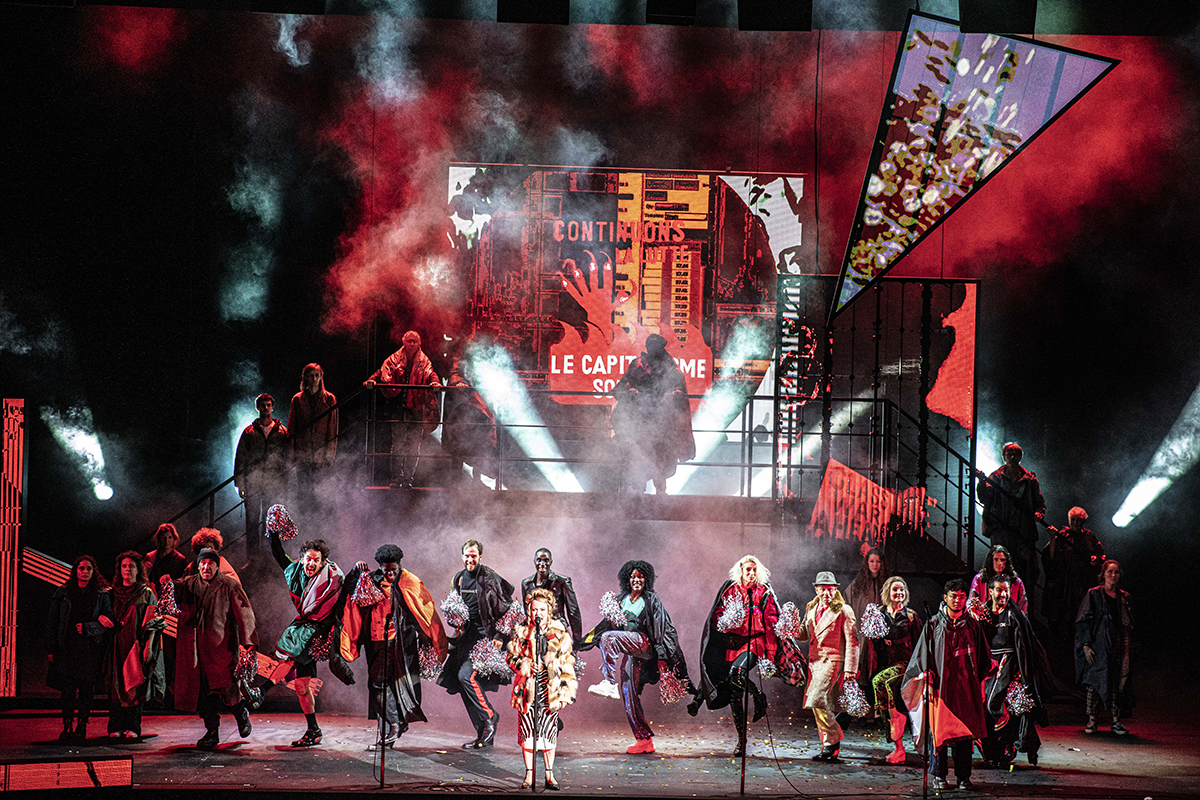
First collaboration between the Comédie-Française and the Festival d'Aix-en-Provence with the creation of Bertolt Brecht's L'Opéra de quat'sous, directed by Thomas Ostermeier, in July 2023.
2024
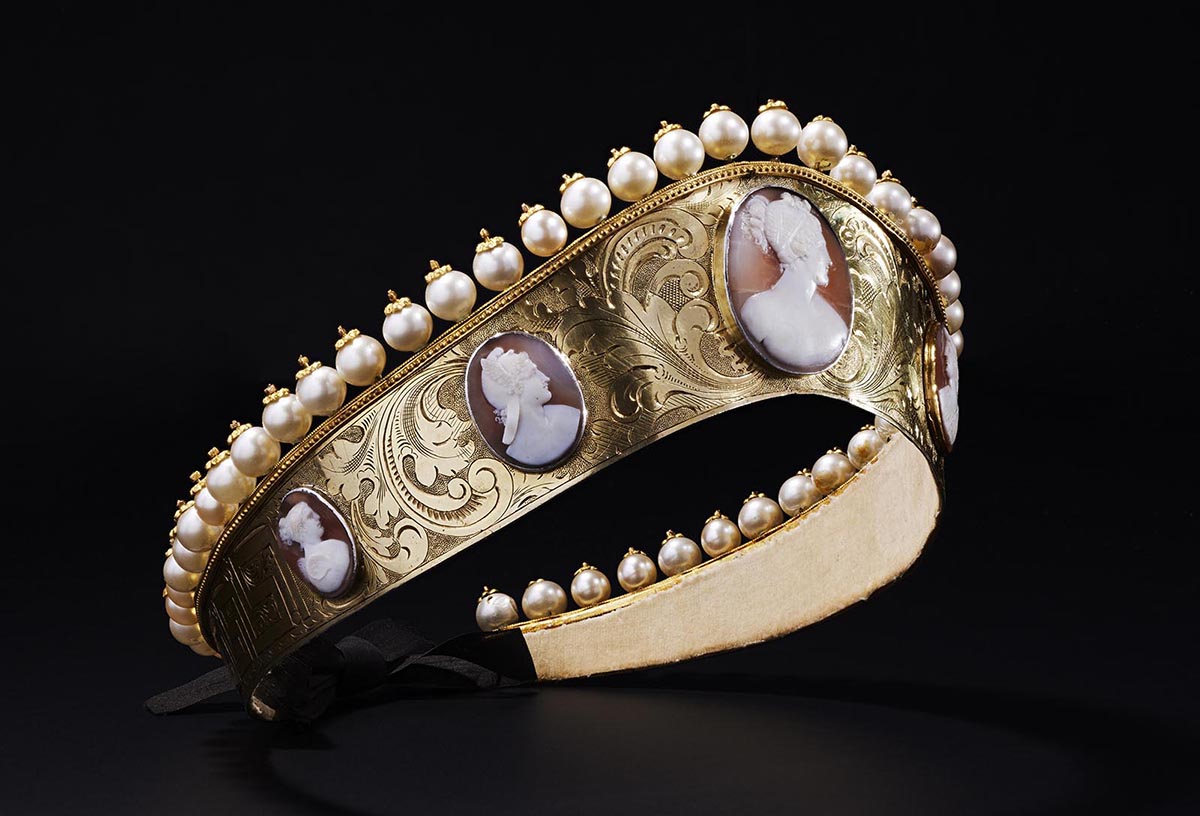
Bijoux de scène de la Comédie-Française, an original exhibition outside the walls of the Comédie-Française, in partnership with the École des Arts Joailliers, gives the public the chance to discover for the first time the stage jewellery worn by the most famous actors and actresses - Talma, Rachel, Sarah Bernhardt.
2024
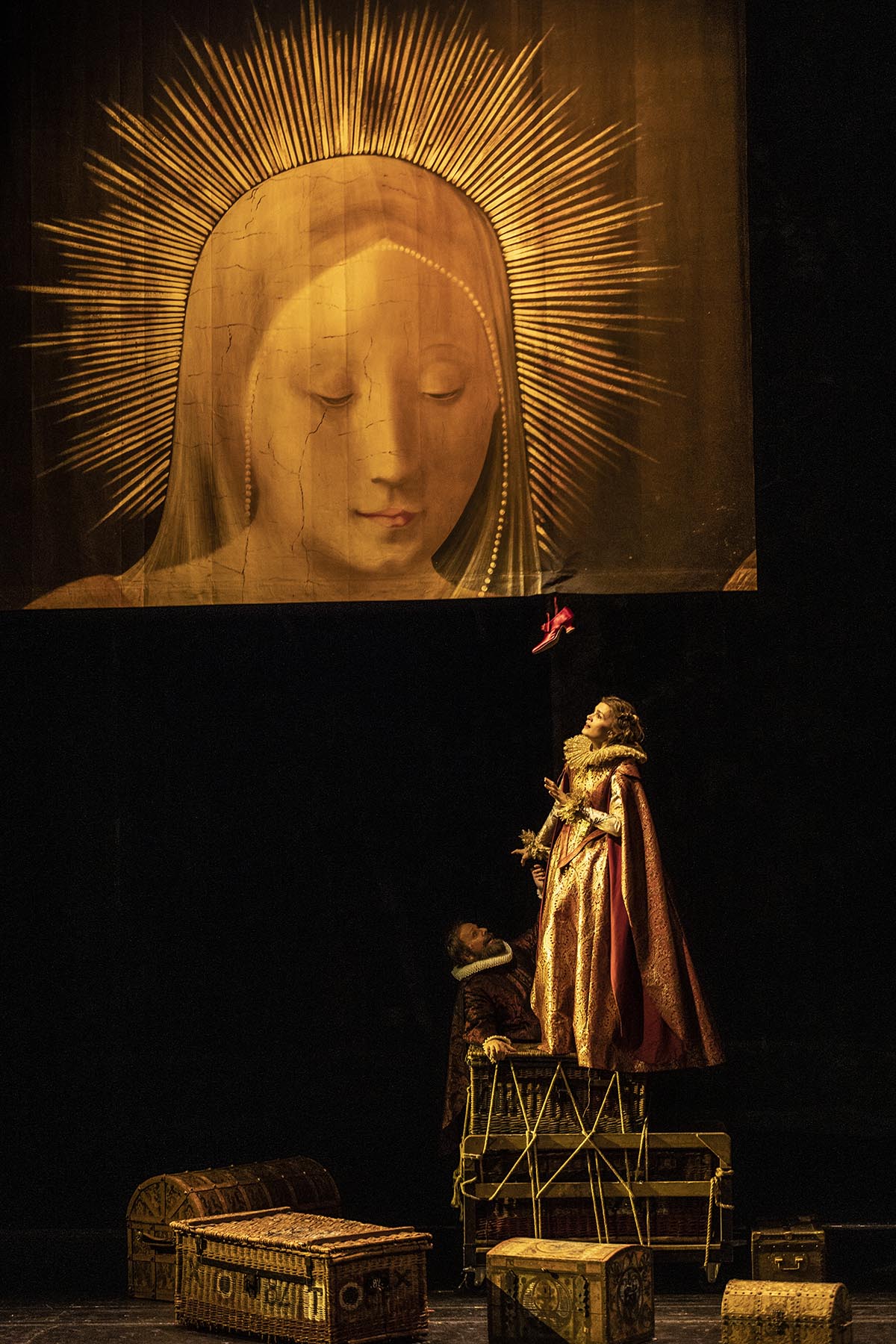
Éric Ruf stages Le Soulier de satin, created in 1943 at the Comédie-Française by Jean-Louis Barrault. It's a huge troupe piece that he tackled ‘with humility and relish’.
